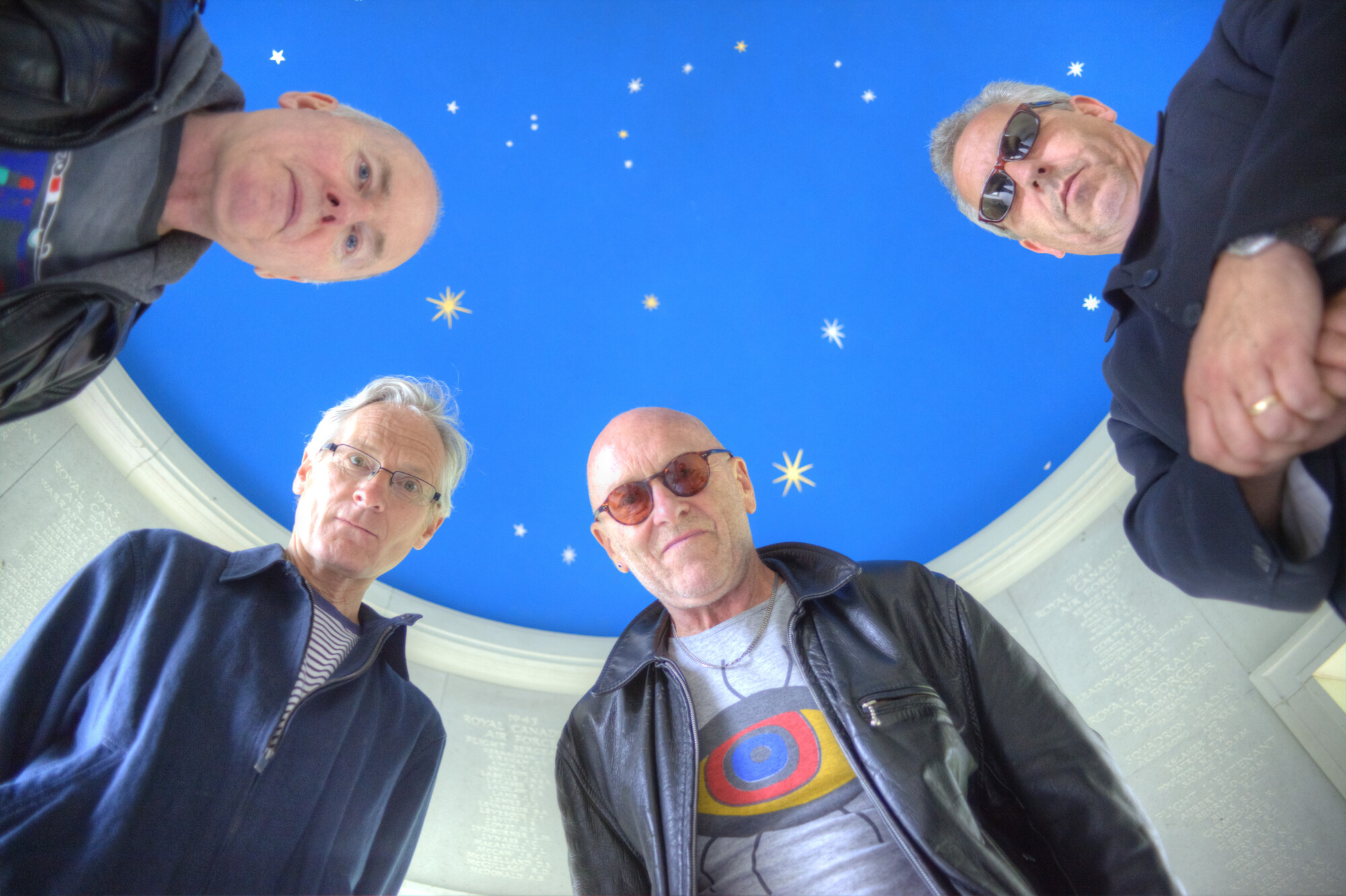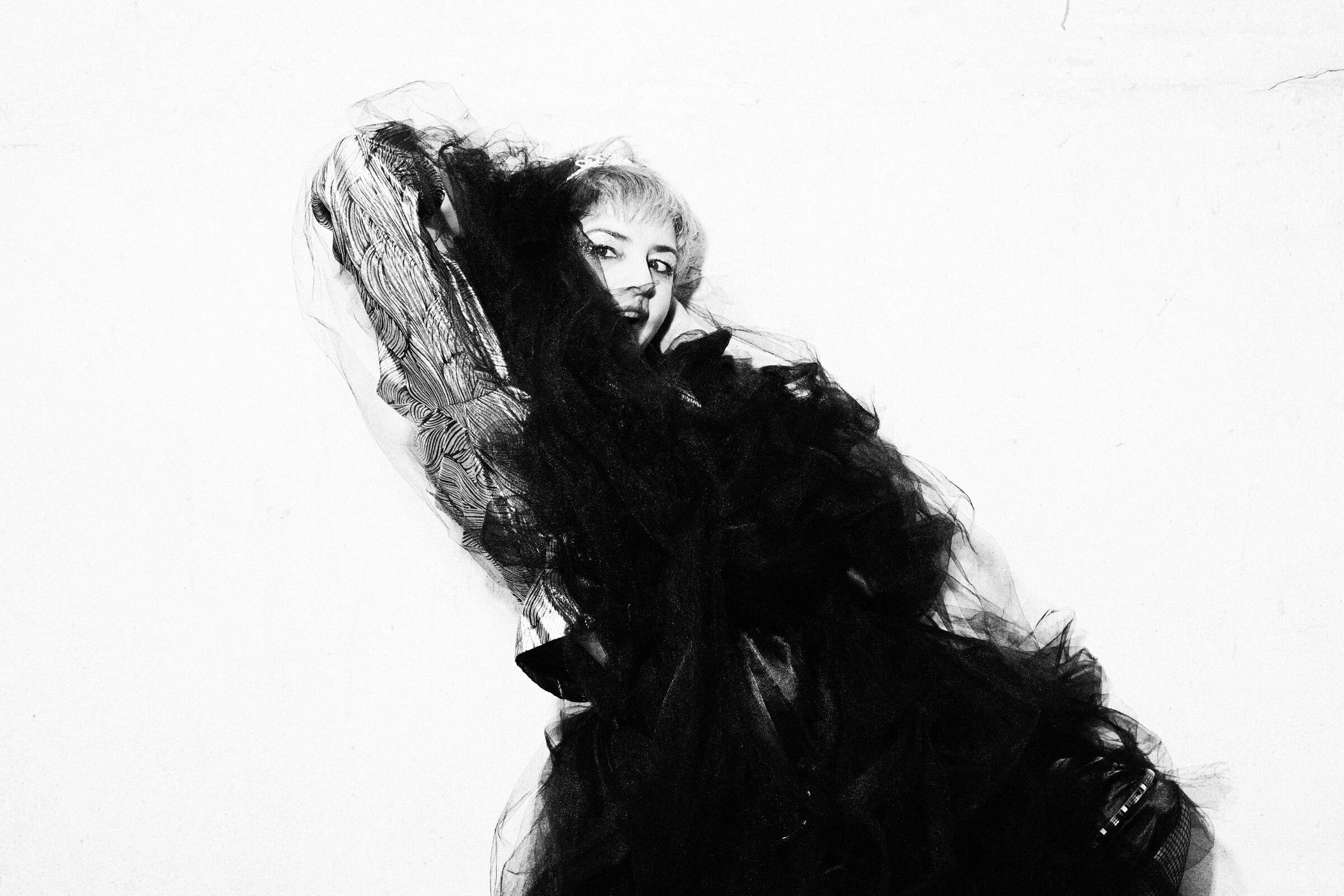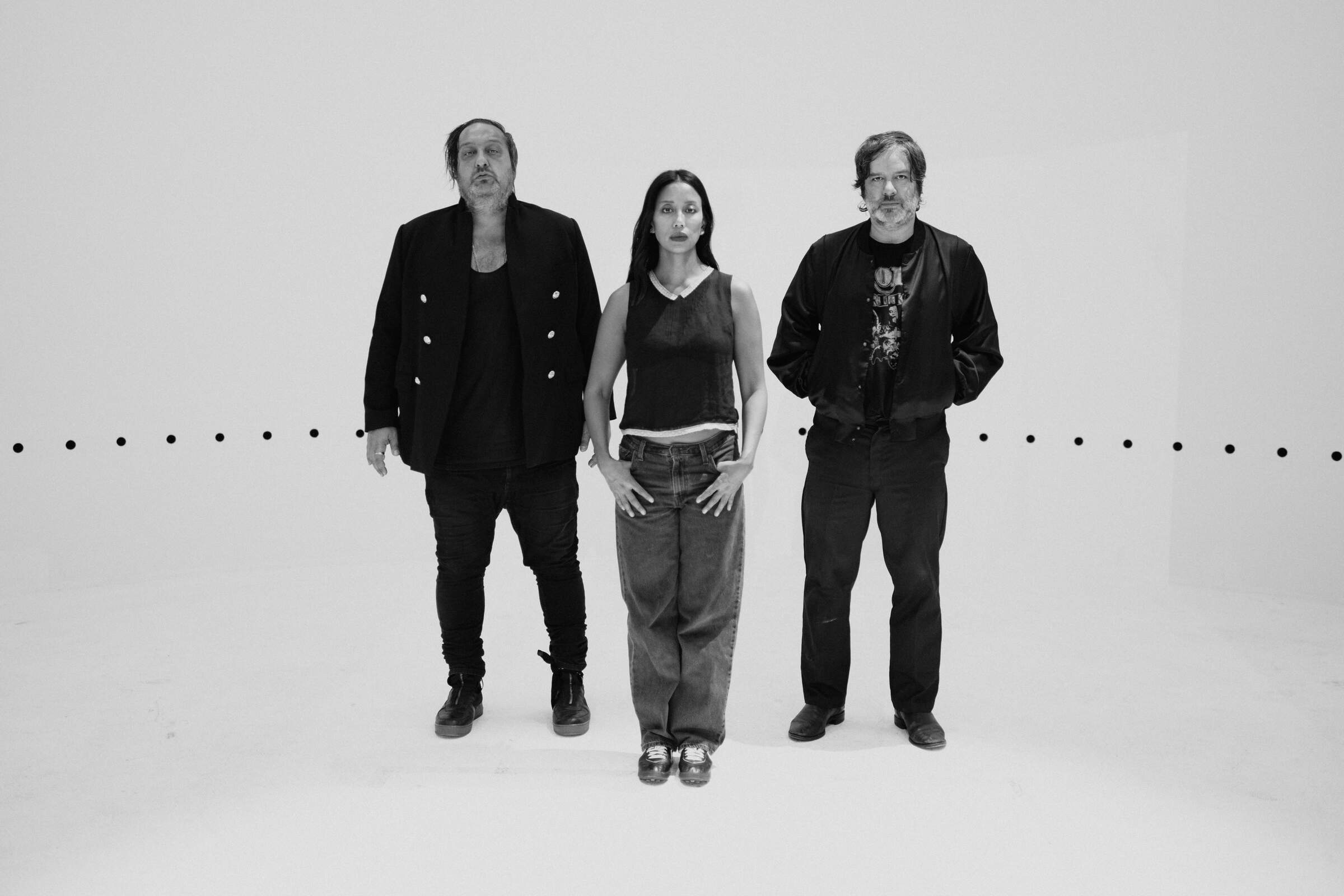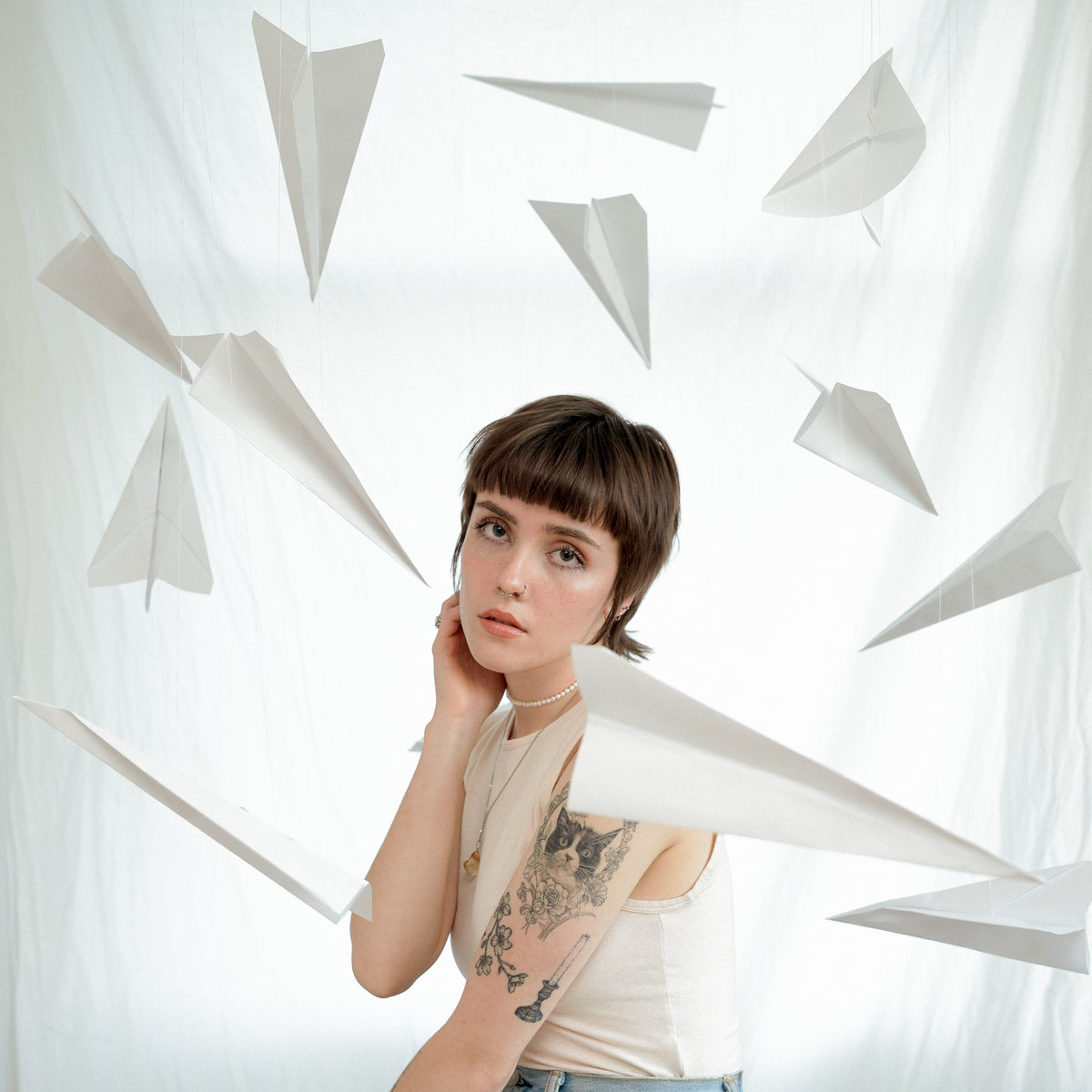The Brainiac 5 | Interview | Journey Through Music and Memories
‘Memory Or Dream’ is the latest release from the legendary Cornwall-based psychedelic punk band The Brainiac 5.
The Brainiac 5 made waves in 1978 with their ‘Mushy Doubt’ EP, championed by DJ John Peel. Fast forward to 2014, and their ’70s recordings were compiled in ‘When Silence Was Sound.’ Now, their latest release, ‘Memory Or Dream,’ showcases a burst of creative energy captured in 2022, after the band’s official hiatus. With original members and new talent, the album is a wacky, complex journey, blending social commentary with personal reflection. The vinyl edition, limited to 265 copies, is a must-have, adorned with artwork capturing the band’s Cornish essence. Dive into ‘Memory Or Dream’ for a glimpse into The Brainiac 5’s enduring creativity and influence.
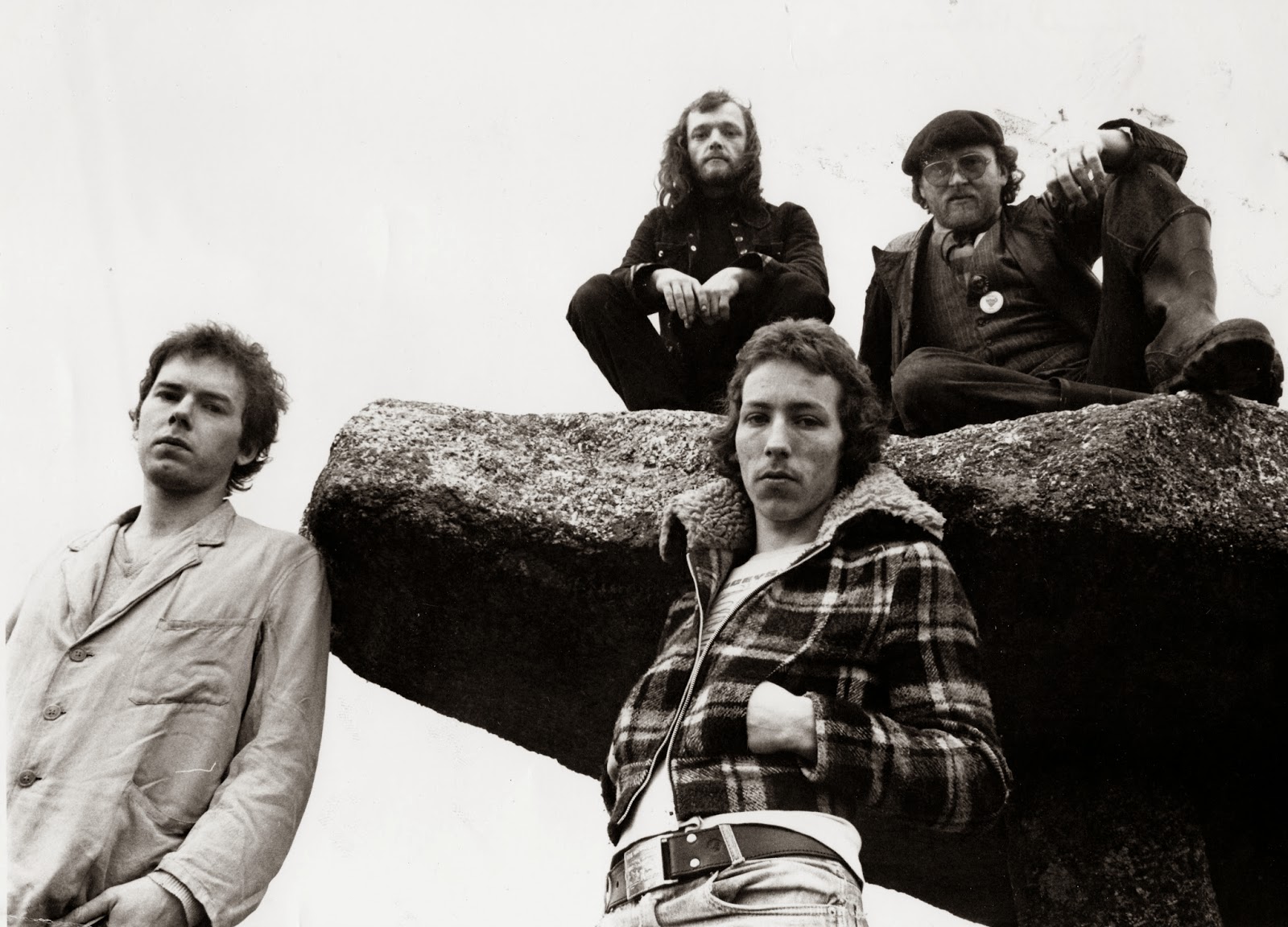
“Memory Or Dream was different from our other albums”
It’s really fantastic to have you after almost a decade. Time really flies fast. Would love if we could discuss the recent release of ‘Memory Or Dream,’ out via High on the Pygtrack. How much time and effort went into it?
Charlie Taylor: ‘Memory Or Dream’ was different from our other albums in that Woody [John “Woody” Wood] was the prime mover for most of the songs. He wrote and recorded the basslines and most of his overdubs and sent them to me with chords and guide notes so I could figure out what was going on, which in many cases wasn’t obvious as the songs have unusual time signatures and irregular bar lengths. In consultation with Woody, I added drums and rhythm guitars. We were both thinking about Captain Beefheart and Dr. John during this process. The next step was to send some of the songs to Bert so he could write lyrics and record vocals. I did this myself for some of the songs. Duncan Kerr added rhythm and lead guitar to most of the tracks. Two of the tracks, ‘Cry In Style’ and ‘Double Stiles,’ were entirely written by Bert. Most of Bert’s songs describe events in the career of the original band in the ‘70s. They refer to very specific events, e.g., we played several times at the Double Stiles in Newquay, and there really was a lady in black on reception who would insist we played our version of ‘Heartbreak Hotel’.
Bert Biscoe: ‘Swerve’ on ‘Memory Or Dream’ is the story of me riding my bike (Sturmey Archer 3-Speed) through Heamoor in the rain and narrowly avoiding running over John Nott, who would later become Minister of Defence! Dunc made the guitar execute that swerve – genius!
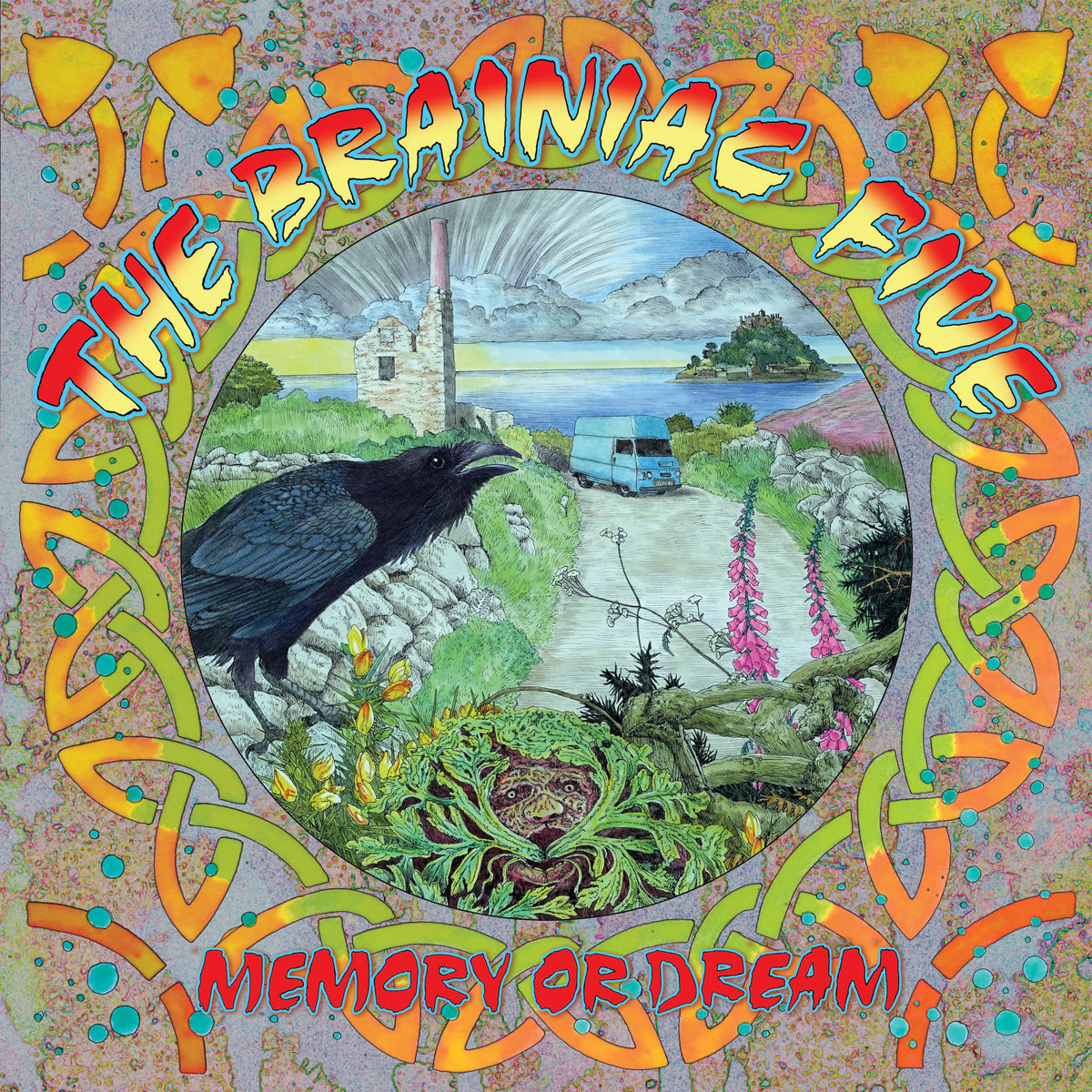
You had the legendary John Hurford design the cover again. He really adds a special atmosphere to it, doesn’t he?
John “Woody” Wood: John Hurford always does great work. I think Colin Hill had a big hand in the design subject too. The cover really does bring back a lot of memories. My house overlooked St. Michael’s Mount, and the High Top Commer van really was the fifth member of the band. It was the most famous member of the band for the AA in the West Country.
Bert: And not to forget Russ our Driver/Mechanic, who assisted in keeping the van running for a good few years. Brave man.
Woody: The back picture is a fitting homage to Beefheart.
John has also done great artwork for the cover of ‘Space is the Place’ 10” vinyl and the compilation CD ‘When Silence Was Sound 1977-1980’.
Charlie: We are also rather partial to the artwork for our other albums ‘Exploding Universe,’ ‘Journey to X,’ ‘We’re Ready,’ ‘Back to Shore,’ and ‘Another Time Another Dimension’ done by Woodenfield (Woody and Barry Field).
How did the reunion come about after all those years?
Duncan Kerr: After a failed attempt by Charlie Taylor to get members of The Half Human Band to play tentative gigs together again (in 2010-ish?), he tried to revive the classic Brainac 5 of himself, Woody, Steve Hudson but without Richard Booth, who had moved to Wales, so Charlie asked me to replace him. I knew all the old numbers, pretty much. That was about 2012, tied up with the release of ‘When Silence was Sound 1977-1980’. The first recording by the revived band was the 10″ ‘Space is the Place’ in 2013. Steve decided that he couldn’t start it all over again, and lived too far away for rehearsals and gigs, with a regular job to get up early for every day. Woody bumped into his old friend saxist Nick Onley, who recommended drummer Wayne Worrell to replace Steve and said that he too was interested in playing with us. The first CD by the revived band, ‘Exploding Universe,’ came out in 2014, with Nick adding a wider range of sounds, and Charlie writing some almost poppy songs in amongst the double-guitar approach.
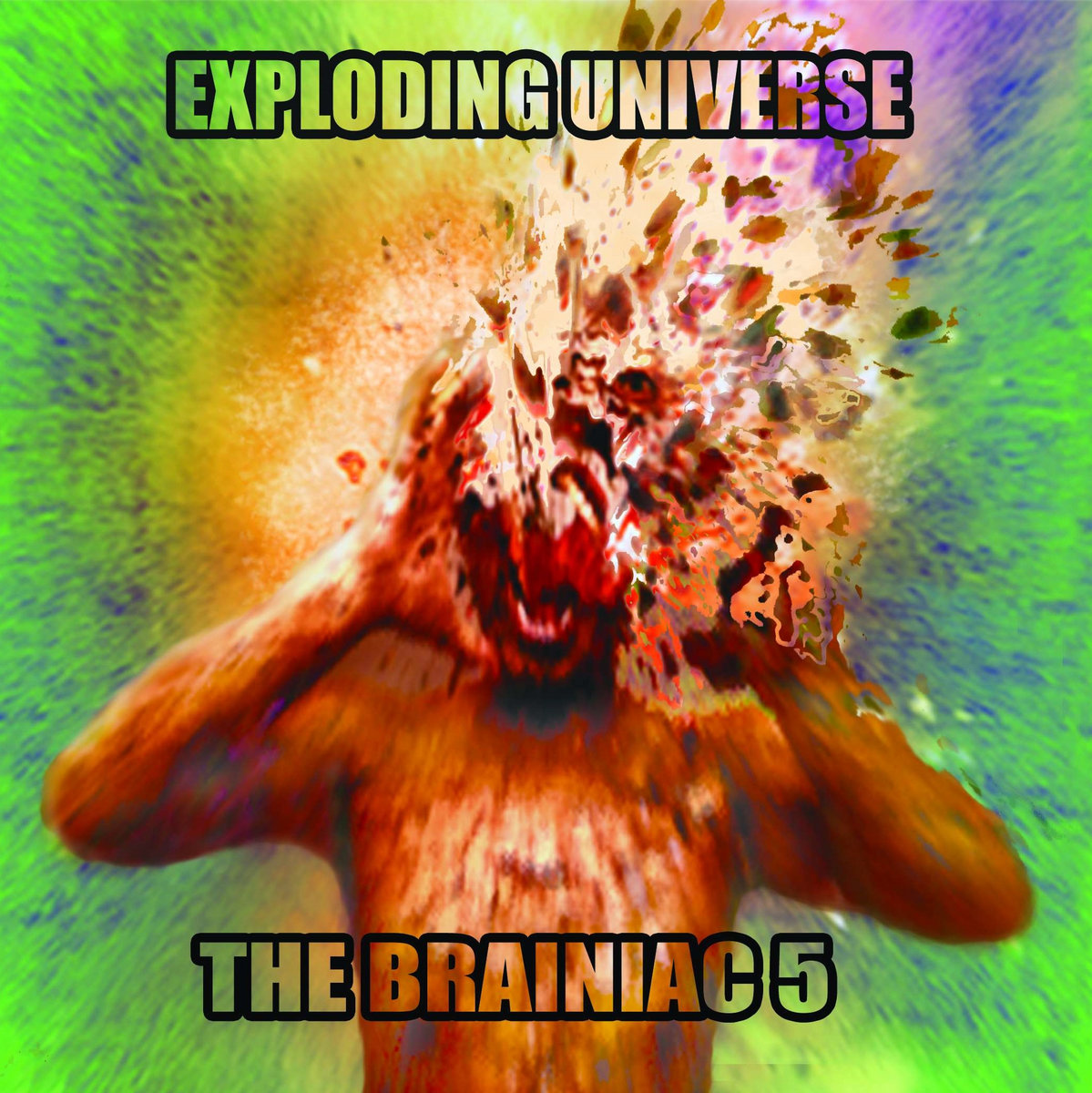
But Nick and Wayne left after an argle-bargle (as Woody called it), and new drummer Joe Malone brought thunder and multiple experience after 25 years in Las Vegas. This lineup completing the 2017 albums ‘Journey to X,’ (more proggy? more surprises) and ‘We’re Ready,’ (which, like ‘Exploding Universe’ before, contained new songs and older songs from the Golden Age of the 1970s).
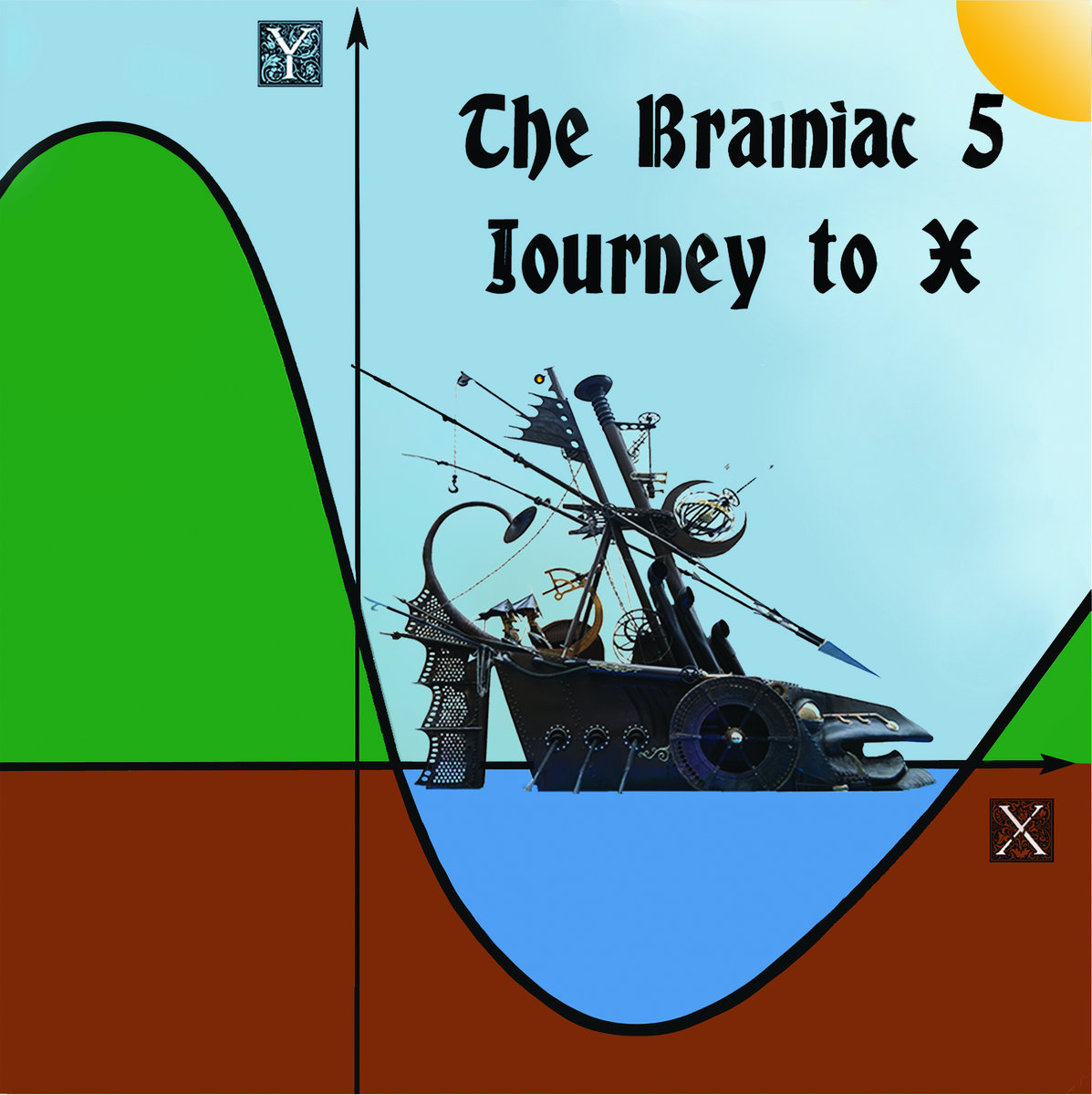
After that, Woody decided that he had had enough of humping equipment about and driving round picking people up for rehearsals and that band malarkey, and was replaced by Wayne moving over to his preferred bass guitar. The story moves on to ‘Back To Shore,’ 2019, as described elsewhere, followed by the Covid-19 era of 2020-2021, with gigs abruptly going from one per month to none per year. This effectively finished this attempt at World domination a second time round, and Charlie and Woody concentrated on recording new ideas at home and communicating and writing new material online instead, hence ‘Another Time Another Dimension’ (2021) and ‘Memory or Dream’ (2022). Quite prolific, I’d say.
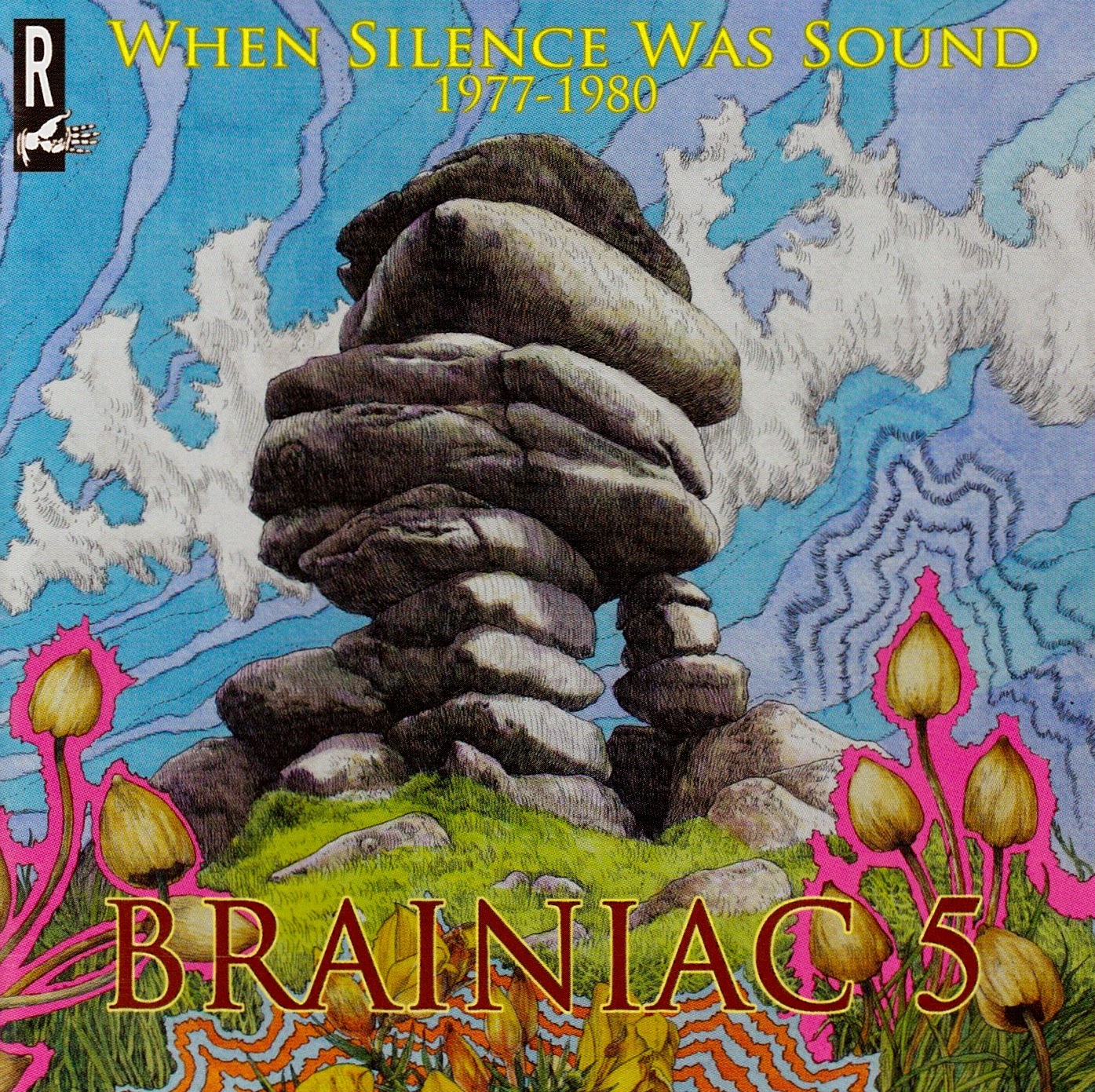
Can you share some further words about the recording and producing process for the band? Would you be able to draw any parallels to your previous releases like, for instance, ‘Back To Shore’ and ‘We’re Ready!’?
Woody: Well, for the recording process of ‘Memory Or Dream,’ I had learned a lot of technical stuff from the recording of ‘Back to Shore’ and ‘Another Time Another Place.’ The way it developed was very organic, but what was different from the previous albums was that we actually had a very clear idea before starting about how we wanted things to be. We wanted the sound to be two guitars, bass, and drums, using original members (well, Duncan may not be an original member, but he has been in the band a long time). We wanted the tunes to be quite short and sound quite simple and straightforward. Although, as Charlie mentioned, there are quite a few unusual time signatures and irregular bar lengths that we wanted to be quite subliminal. Charlie also mentioned Beefheart (particularly ‘Clear Spot’ for me) and Dr. John. And also for me, there was a little bit of Grateful Dead at some points. But that was just a guide to our thinking. You don’t want it to directly sound like that. It must sound like The Brainiac 5. It was all a bit about going back to our roots and that got reflected in the lyrics.
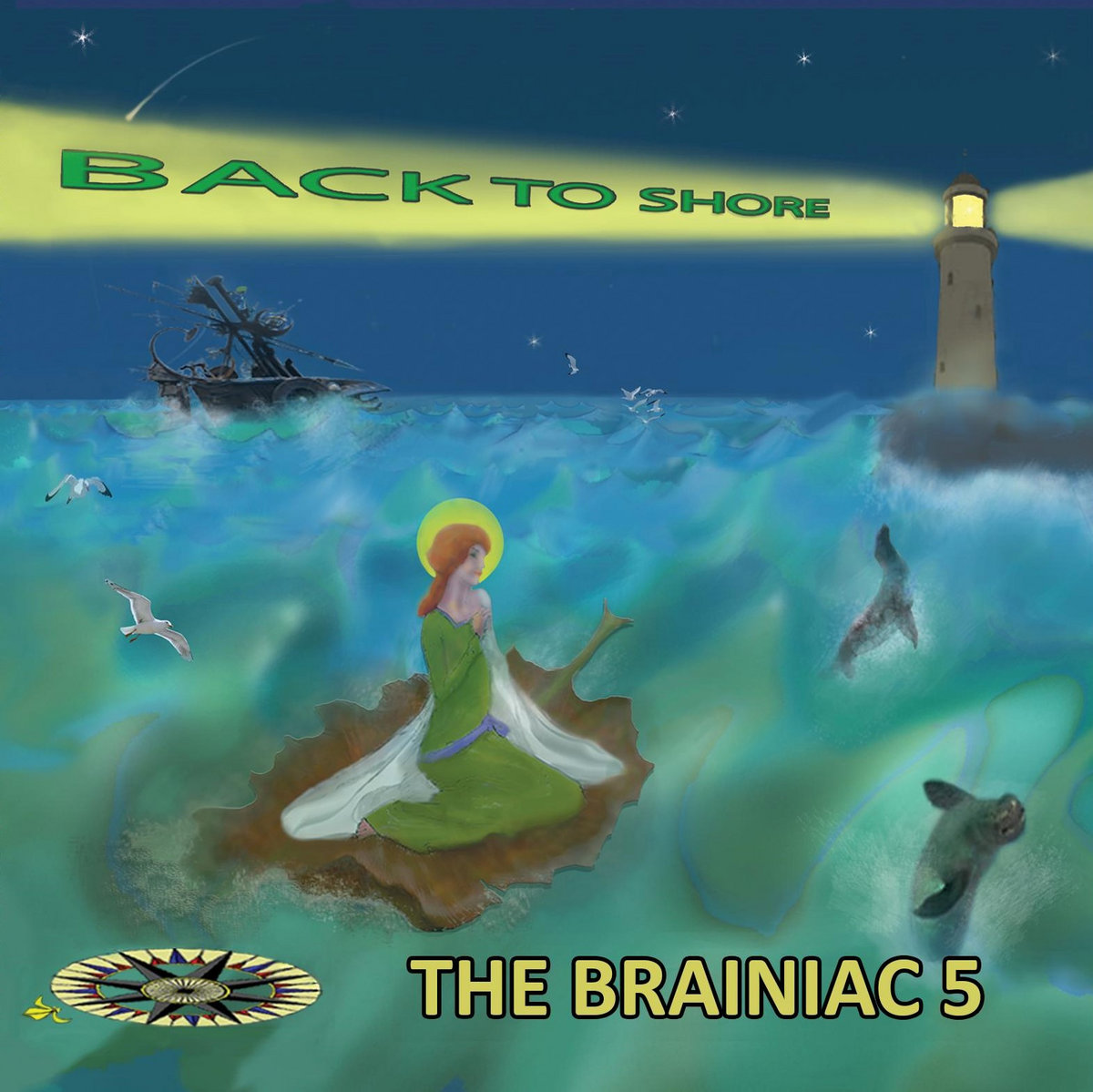
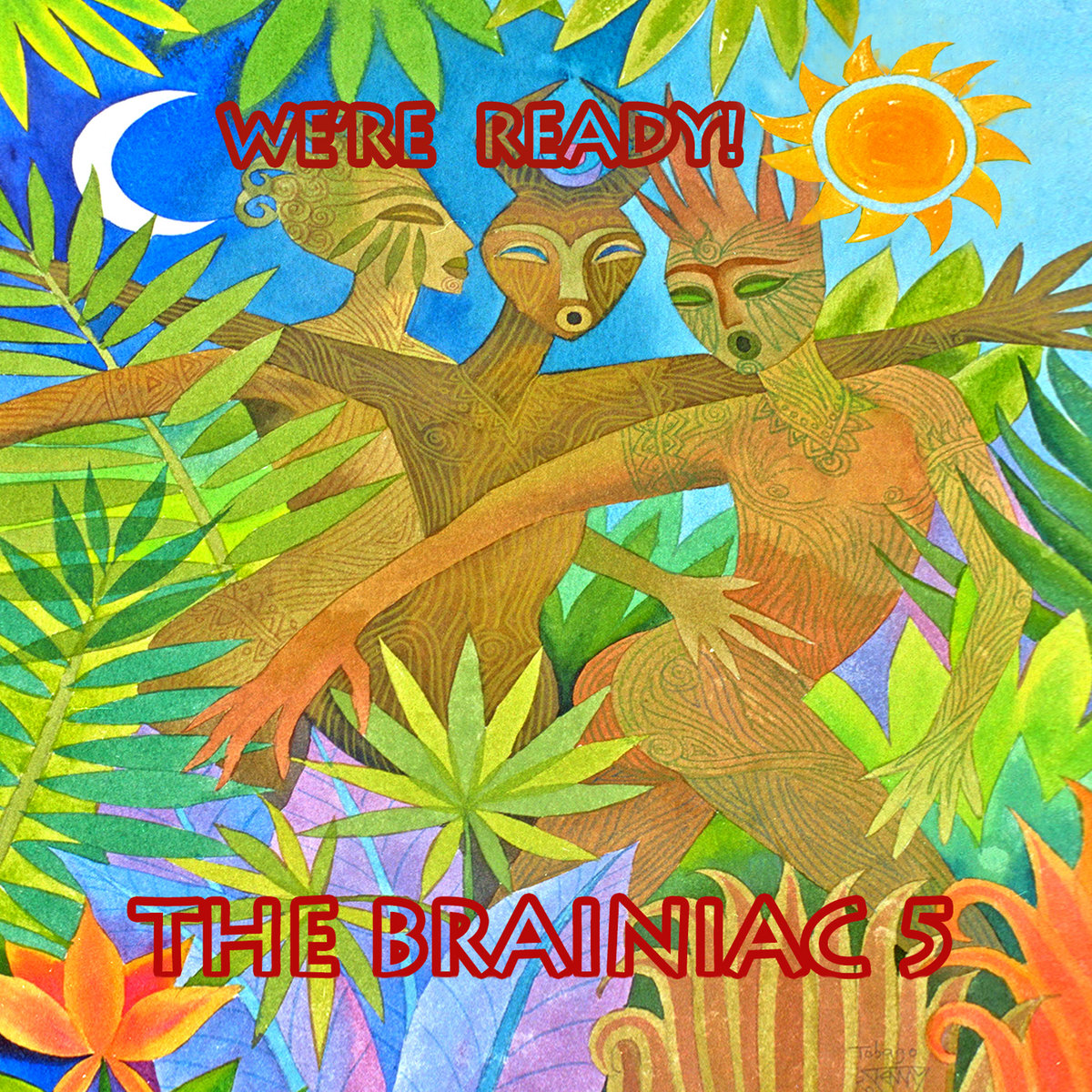
I did get allowed to add my slightly strange collection of small instruments as overdubs, the odd tune got to being a bit longer than intended, and Bert managed to sneak in his daughter, Molly, to provide lovely backing vocals on one track, but apart from that, we basically stuck to this formula.
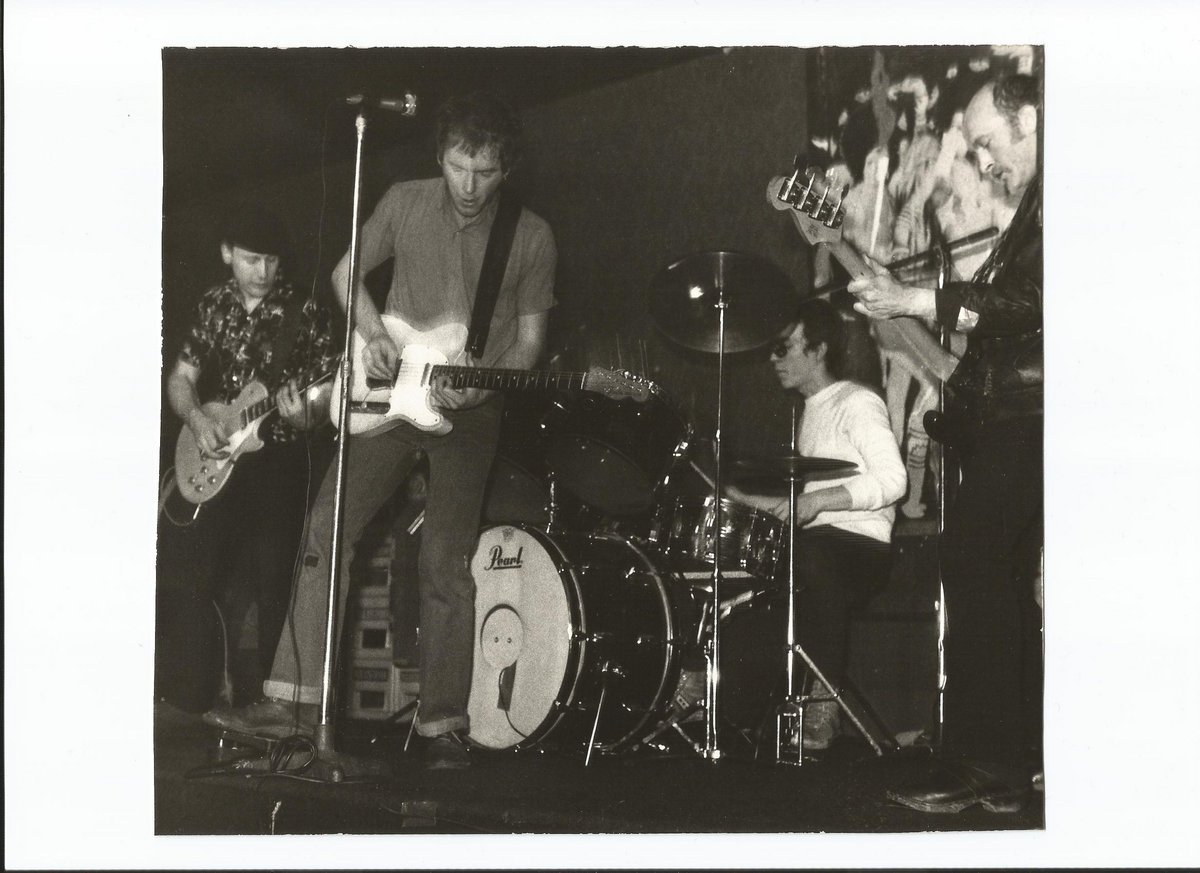
Regarding parallels with other material, since we started all those many years ago, a lot has happened to the quality and ways you can record, so we have had to adapt with that. We’ve learned a lot of things along the way.
This may not be strictly answering your question, but a little history of how we recorded over those many years follows:
Our first recordings were done in a very cold garage in Botallack, West Penwith. They were done live with no overdubs on a two-track, reel-to-reel Revox.
Following that, we were fortunate in that Charlie’s old friend and associate from The Half Human Band, Martin Griffin, opened his studio in Roche, up country a bit, not far from Bodmin. He was gracious enough to allow us to record there for free, with him engineering. For the duration of the band’s first incarnation, this was only a four-track studio, and we recorded live with just lead and backing vocals being added. “Mushy Doubt” resulted from that. When recording it, we had not really paid any attention to running times. It was only when we got into the actual production of it that we realized that the running time was too long to fit onto the EP if at 45 rpm, so we had to make it 33 1/3 rpm. This was a bit of a drag as it meant that it ended up a bit quiet and you had to pump up the volume quite a bit when playing the record. This made us very conscious of running times after that.
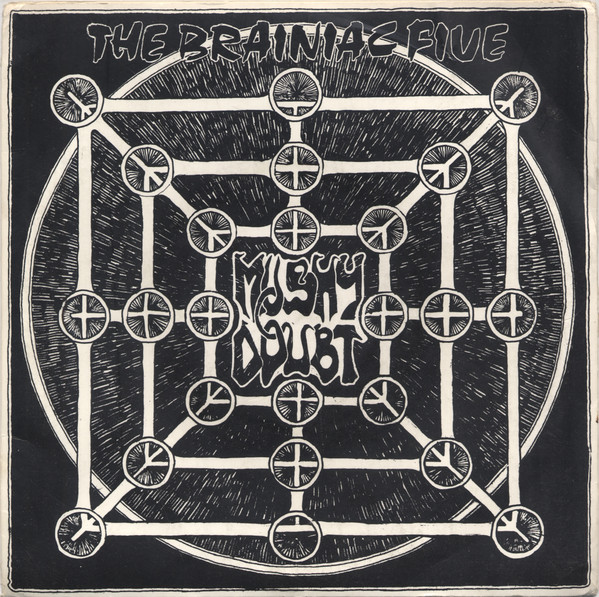
The EP title may have had something to do with the fact that there were numerous mushrooms in the field adjacent to the studio. We would pop over there and have a little taster before returning to the studio to jam late into the night. On going to bed, we were convinced we had recorded the greatest music ever, but in the morning when we listened back it was mostly just crap. But we would manage to dig useful bits out.
The other recordings we did there in that period that got issued were on the ‘Double-Booked’ compilation LP put out by the William IV Pub in Truro. Things were a bit different for that in that they actually paid for the studio time with a whole lot of bands contributing two tracks. Each band had a maximum of one day to complete their tracks, which was a bit hard going as none of them had any recording experience and Martin was not the fastest engineer in the world. The good bit for us was that we were staying there the whole recording time and recorded last. The William IV, being a pub, had supplied cases of free beer. We did drink some of that.
By the time Richard Booth joined and Bert Biscoe left, the studio had become an 8-track.
In fact, the first time Richard played with us was on a session with Bert, where he added a guitar solo to the track ‘Monkeys and Degenerates,’ which later came out as a single with ‘Time.’
So, with the studio now 8-track, we started to record backing tracks with overdubs. The ‘Working/Feel’ single and ‘World Inside’ LP came from that. We seem to have a bit of collective amnesia about recording ‘Working/Feel,’ but we think it took about two days to record and mix it. The one thing I can remember about ‘Working’ was the Jew’s Harp on it. It was the first time we used that but have subsequently used it quite a bit. It came about because I had just gotten a record called ‘A Lark in Clear Air-Music for Small Instruments’. It featured harmonicas, penny whistles, spoons, and Jew’s harps. Some tracks were actually just Jew’s harp bands. I was fascinated by the sound and bought a Jew’s harp. The tracks had been finished, and the others were in the control room working on the mix. I was just sitting about in the recording studio practicing playing the Jew’s harp when Martin Griffin came in, heard me, and straight away suggested trying it on ‘Working’. The rest is history, as they say, and later, amongst other things, we ended up with Jew’s harp playing on a continuous loop throughout the ‘Back to Shore’ album. Who would have thought it?
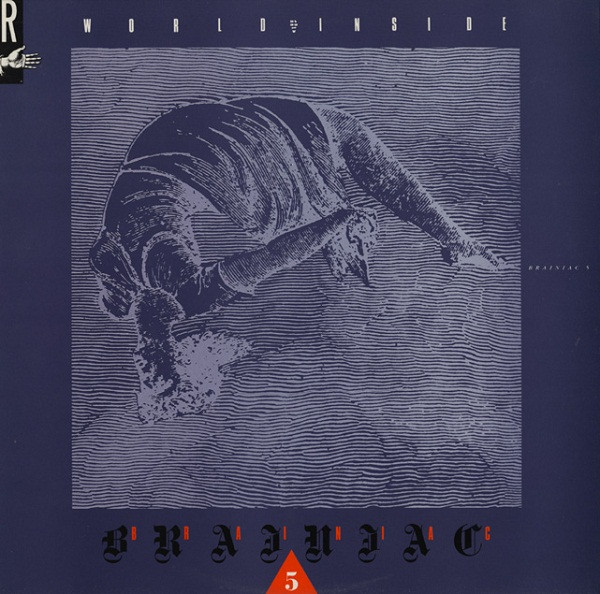
For ‘World Inside,’ Martin and Charlie got a bit more carried away with some of the effects that could be put on the mix, which I think Charlie regrets now.
We actually recorded a lot of tracks at Roche which never saw the light of day. Unfortunately, the masters have all been lost but we have managed to retrieve copies of some. These, together with a couple from the Botallack sessions, are now out on the ‘Another Time Another Dimension’ compilation album.
When we moved to London we couldn’t afford to record in a professional studio but one further track did come out. This was ‘I Want You,’ which appeared on ‘Woronzoid,’ a compilation album released by Bevis Frond. This was a primitive recording made live on a ghetto blaster during a rehearsal in the front room of the house we were living in, in Crouch End. But the sound and performance were surprisingly okay.
After the Brainiac 5’s massive hibernation period, the third lineup’s first recording was the 10” vinyl, ‘Space Is the Place’. This did not end up quite as planned. It was done for Nigel Cross’s Shagrat Records. Nigel had said he would pay for a recording studio but wanted us to do a demo first. As a sign of just how much recording equipment had improved, we did the demo live in Charlie’s front room in Epping on a small two-track recorder. Its sound was so good and the playing was good in a tight/loose sort of way, so Nigel decided to put it out as it was with just some very minor backing vocal overdubs.
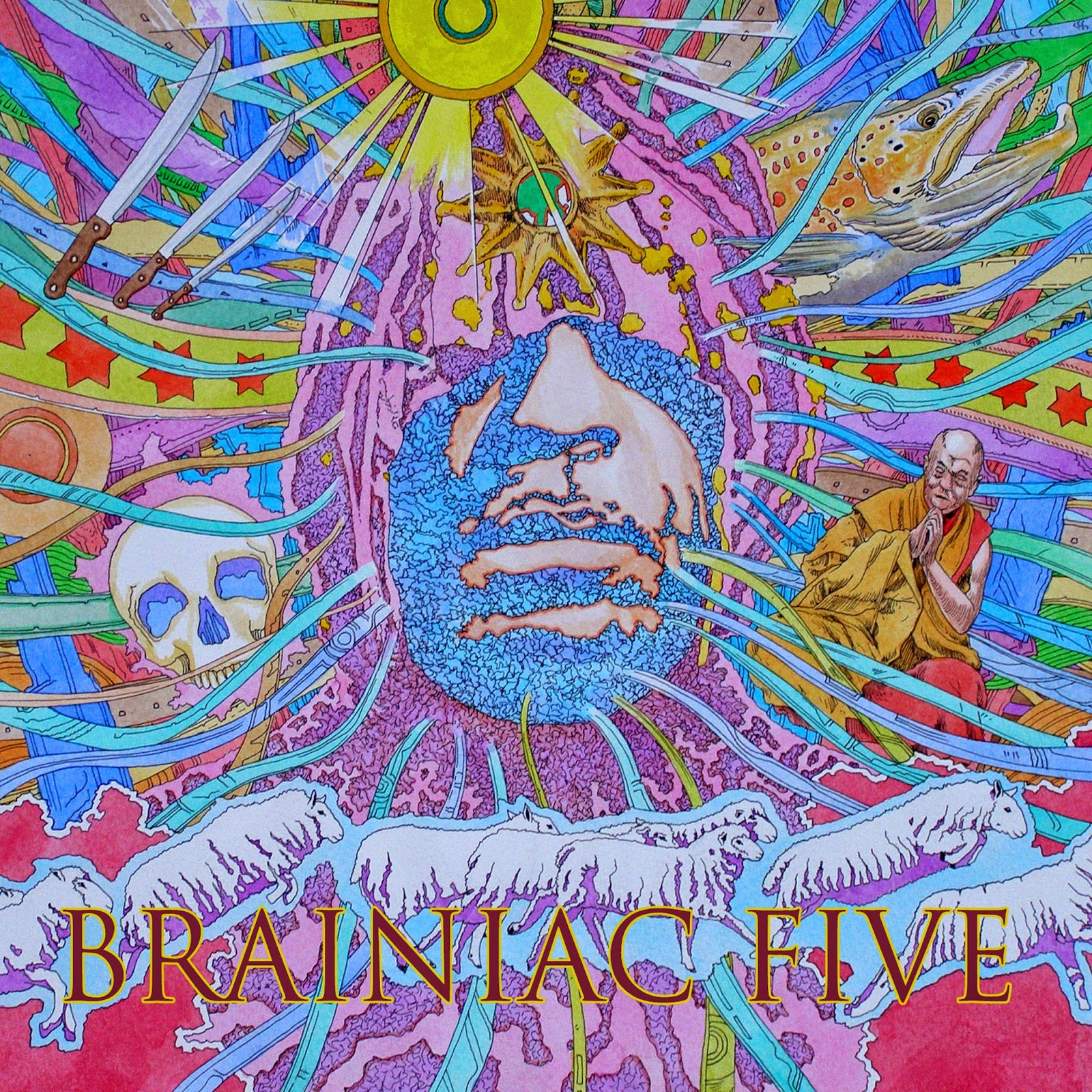
Moving on to the band’s fourth incarnation, we decided to change the band’s sound a bit by adding Nick Onley on saxophone and flute, as well as some vocals and guitar. Before attempting to record, we spent a lot of time working out the new numbers, playing them live to get them worked in, and then spending time rehearsing just the backing tracks and thinking about how to do the overdubs. As we were paying to go into a proper studio, Alchemy, with the option of using loads of tracks and the ability to play around with the tracks far more than we could do at Roche, we wanted to use our time as efficiently as possible. We struck lucky with the engineer, Kenny Jones, as although he thought we were a bit mad, he did catch on to what we wanted very quickly. We did all the things we had carefully planned and also managed to throw in a completely off-the-cuff track, ‘Haphazard!,’ which was no mean feat, as it was mostly in 7/8 time. However, the major error we made was not recording the backing tracks to a click. This had not mattered too much in the past at Roche, but with all the new possibilities for more tracks and adjustments available, the lack of a click made things a lot harder to sort out than they should have been.
With the band’s fifth incarnation, the sound changed again. We went back to a much more guitar-heavy sound accompanied by the powerhouse drumming of Joe Malone. But, dare I say it, some things got noticeably a bit more proggy. We recorded ‘Journey to X’ and ‘We’re Ready’ in quite quick succession. The method was really the same for both as for ‘Exploding Universe,’ except we made sure we did the backing tracks with a click, which may be irritating but really helps a lot once you get used to it. The icing on the cake for this was that I introduced the band to Jessie Pie, who sang a track on each and ended up singing live with the band on some numbers. I thought her singing on the albums was great, but her singing live with the band was a bit of a Marmite experience for some.
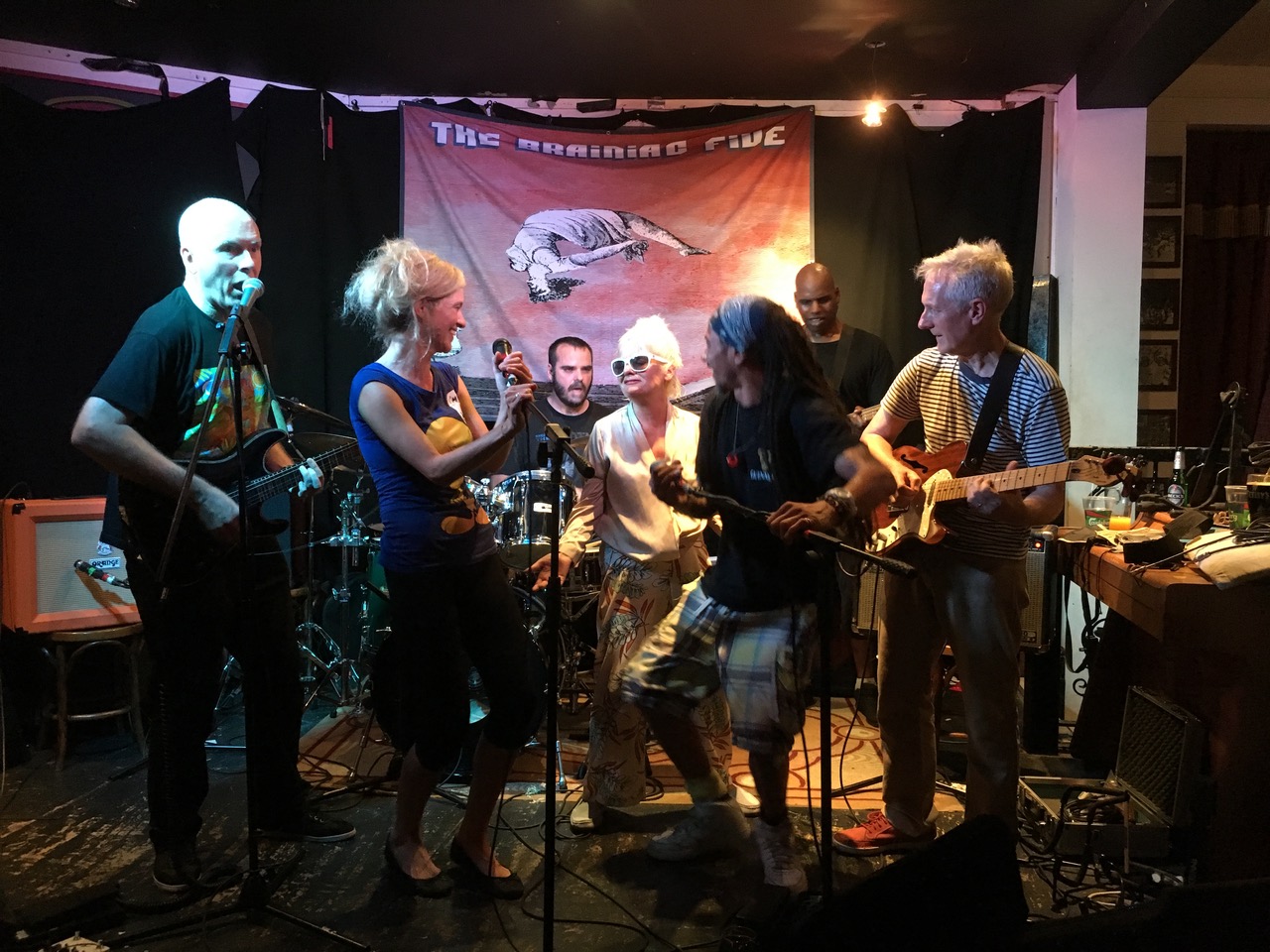
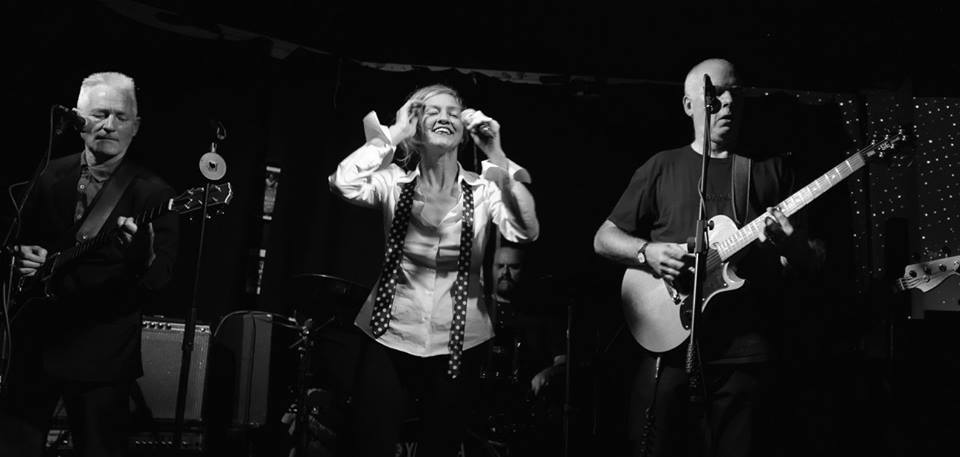
It was for the next album, ‘Back to Shore,’ that things really started to deviate from the past, recording-wise.
After finishing ‘We’re Ready,’ when everyone was packing up, on a whim I got the engineer to cut up an unused bit of backing track into a two-bar, two-chord loop. For fun, really, with no clear plan, we sent this out to past band members, people who had sat in with us, and some people that I knew but had not heard the band. They were just asked to put onto the loop whatever they liked. To our surprise, nearly everyone returned something. From this, we picked out a couple which we thought could be developed well. One, ‘A Woman’s Work,’ was a Bert Biscoe contribution. The other, ‘The Seal Man,’ was by sax player Oli Artlotto. Our thinking at that point was that they could be made into two long tracks to make a 12” single.
Myself, Charlie, and Duncan then met up at Charlie’s home studio, Disco 2000, and added our ideas. After putting these onto the two tracks in a provisional arrangement, we sent them back to Bert and Oli, with some suggestions as to how they could develop them. With the developed tracks back, we sent them off to Chrissy Quayle (The Mermaid of Zennor, our long-term friend from West Penwith) to put her penny’s worth in. She came back with some really well-worked vocals, penny whistle, flute, and sax. Again, we played about with the arrangement and mix, and Charlie created a long coda to go on the end of ‘The Seal Man,’ to finish the track off.
Bert: The request from Woody and Charlie to create lyrics for ‘Back to Shore’ came out of the blue. My contribution, ‘A Woman’s Work,’ is a polemic about the battle by women for equality, mixed in with the story of St Ia, who sailed on a leaf from Ireland to St Ives. The real buzz for me was to be working with Chrissie, with whom I have worked extensively in the past. When finished, I thought it was weirdly good – and it was great to be back in the Brainiac harness.
Woody: By this point, we were on a bit of a roll, with loads more ideas based on the same loop. So, we roughed out arrangements for two more tracks, ‘This Way’ and ‘A Tribute to Alex Ward,’ with our contributions added and holes left for further contributions. The ‘A Tribute to Alex Ward’ track had horn arrangements added by Oli, and ‘This Way’ had Chrissy again adding penny whistle, flute, and sax. In addition to Chrissy, we got Oxman to add a toast (Duncan knew him from Reckless Records, where he was the reggae vinyl expert). Then, just to put the icing on the cake, we got bagpipe player Dave Brooks to add a bit of mad magic. We had known him from the festival scene in Cornwall, and I had played with him in his band Silly Boy Lemon in the mid-80s, where he sang, played sax, flute, and rock and roll bagpipes. Just prior to recording, Dave had been in the hospital, having suffered a heart attack. I actually went to the hospital to pick him up to take him to record. The doctor had told him that he should go home to relax, but instead, he went out into Charlie’s back garden to warm up his bagpipes and ended up serenading the neighbors for a full half-hour before cutting his pieces.
The four tracks ran for 38 minutes, so we decided to put them out as an album on 12” vinyl. Unfortunately, that did not work out as the test pressing was of really poor quality, and despite several attempts, it was never to our satisfaction. So, we went on to plan B, which involved putting out a longer-running CD, with the original four tracks edited down a bit and a solo instrumental track by Duncan added along with three traditionally recorded tracks by what was at the time the lineup of the band that was playing live gigs (being Charlie and Duncan with Joe Malone on drums and Wayne Worrell on bass).
A change was forced upon us for the next album, ‘Another Time Another Dimension’.
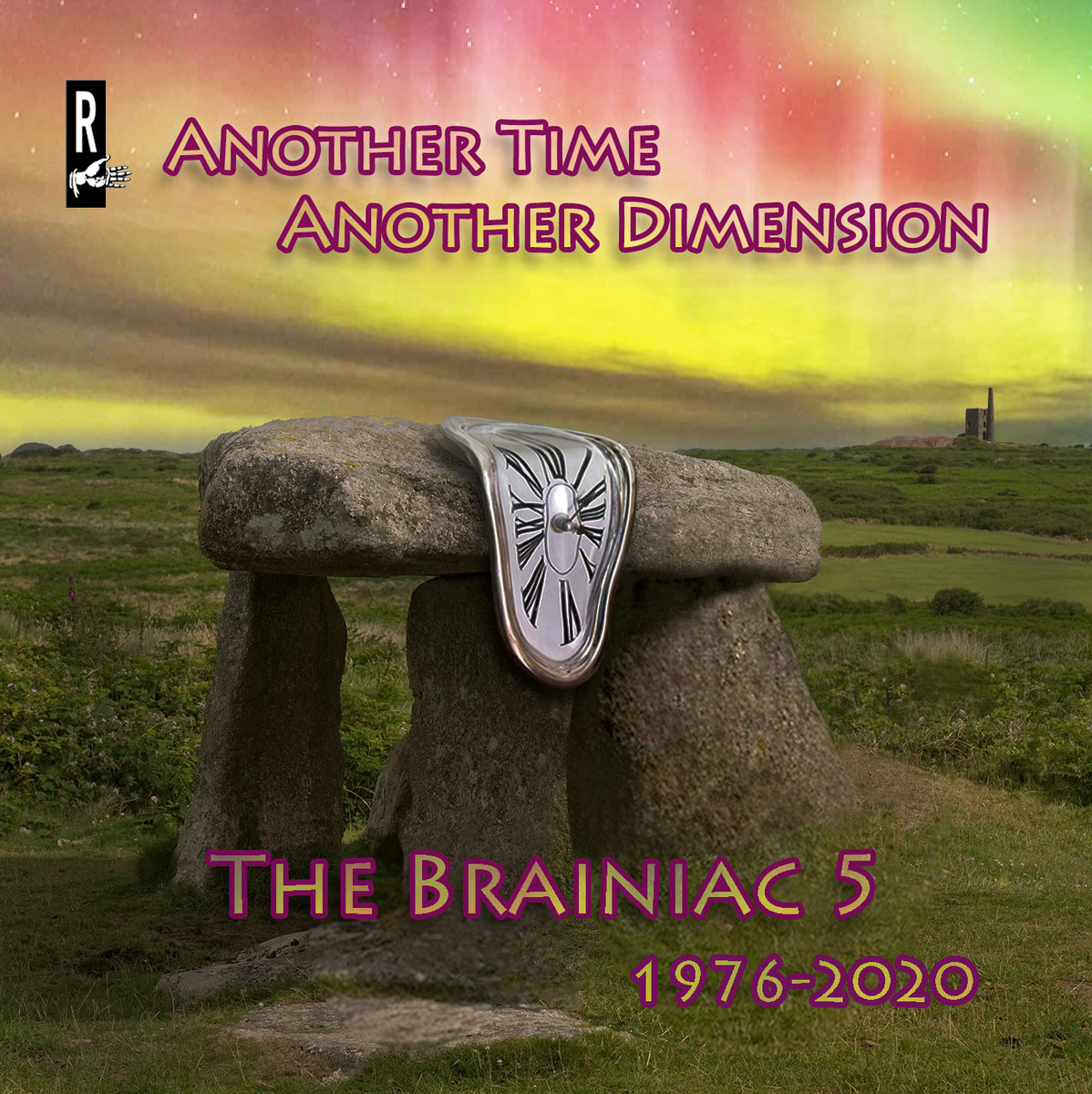
That was done during COVID, so we had no choice. This one came about when a couple of very old Brainiac 5 tracks came up on Charlie’s Hi-Fi when on random play, which he really liked. This led us to search the Brainiac 5 archive for unreleased material. An assortment of stuff turned up.
There were two with John and Carole Webster that were done before the Brainiac 5 had officially formed. (John Webster had been in China Pig with Charlie previously). It was noted earlier that these were recorded at Bernie’s Garage in Botallack, on a Revox two-track).
Others may have been recorded at Roach Studios, but none of us are sure about that. Then there were two recorded on a cassette player at a totally mad gig at The White Horse in Launceston. Another was just a recording from a cassette player during a jam we were having at a rehearsal at our place in Crouch End, just after we moved to London.
Charlie had a poke around stuff that he had recorded while he was in the USA when the band did not exist and came up with another track to use. Then the final live track was from a gig in London recorded in 2019. To represent the then-current situation, we managed to get the backing track done for a tune of mine at Charlie’s studio set up at Disco 2000 during a lull in COVID restrictions. However, the restrictions came back, which meant I had to pull my finger out and set up a studio at my place to be able to push things forward. In that way, we managed to sort out my track, ‘Another Time Another Dimension,’ with some overdubs by me, Charlie adding vocals and guitar, Duncan adding guitar, and the ever-wonderful Chrissy Quayle adding a vocal and sax part from her studio in Spain. Charlie then developed a track, ‘My Devils,’ for me to add my parts to from my home studio.
To finish off, Bert Biscoe sent us a track, ‘Never Say Never,’ with his guitar and vocal for me to add bass and Charlie a guitar solo.
By then, we were getting used to working at a distance by email.
So that’s it. There have been a lot of changes leading up to ‘Memory or Dream,’ but the experience we have gained over our long recording career has all helped produce it.
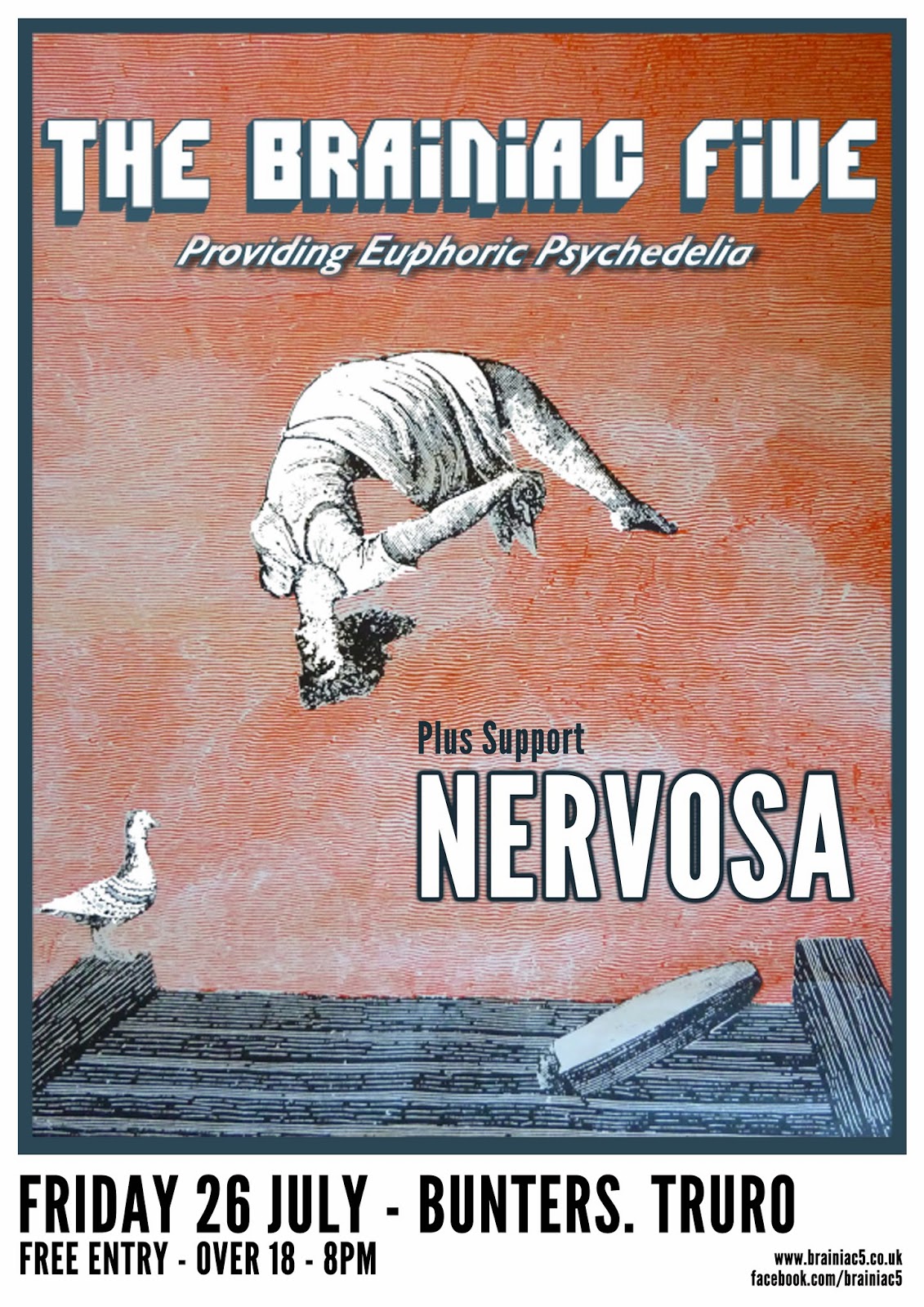
How do you feel about the fact that music keeps you connected together? Isn’t it amazing that you’re still making new music together in 2023?
Charlie: Yes, that’s true. Playing in a band for a number of years brings the members very close together in a “band of brothers” kind of way. We had so many tribulations and surprising successes in the ‘70s that a permanent bond was formed.
Bert: Charlie is right – we had something beyond just playing which held us together. Coming back, albeit digitally and distantly, to create new work, has been invigorating, and I think we all now understand that we are friends who each have shared a part of each other’s life.
Would love it if you could connect the dots and tell us what led to the formation of The Brainiac 5?
Woody: A bit of background information to set the existing scene at the time of the band’s formation:
Cornwall had long had a strong folk music scene. In West Penwith, in addition to the Winter Gardens, which put on big names like John Martyn, there were two very established folk clubs, each with its own vibe. Pipers ran through the year and booked quite famous headline acts from up country like Michael Chapman and Wizz Jones, along with various local bands such as Clive Palmer’s Temple Creatures. They also provided floor spots. The Mermaid Folk Club, located in the old pig barn next to the Gurnard’s Head, only operated four nights a week through the summer and had a group of six resident performers, as well as offering floor spots. However, much to the annoyance of The Winter Gardens and Pipers, the acts they booked tended to stay for a day or so after performing and often ended up coming up to the Mermaid to do a set for free. I think what attracted them to come may have had something to do with the fact that, after the club, the Gurnard’s always had a late, late lock-in that attracted a fine selection of reprobates. I worked the door for the club to start with and played a bit of harmonica, but in the end, I was running it. Bert Biscoe had been doing floor spots at both clubs for quite a while, reciting his poetry, playing guitar, and singing. I seem to remember that when Charlie turned up in Cornwall, he had met Bert through his girlfriend, Vanessa Johnson. He and Bert then started playing folk clubs a bit as a duo.
Bert: There was also a club at Mitchell, outside Truro – The Folk Cottage that worked in conjunction with the Pipers in bringing up country acts down. Henry “The Jug” Bartlett ran it and was part of the Famous Jug Band with the illustrious Clive Palmer (again), Pete Berryman, and Jill Johnson. Those with a love for a slightly anarchic take on folk should check out their wonderful albums on YouTube.
Woody: In addition to folk acts, John Adams at The Winter Gardens booked quite a good selection of rock acts. Dr. Feelgood and Kokomo played there in 1975, among others (a couple of booking high spots later were The Sex Pistols and Ramones/Talking Heads – this last gig has a whole book written about it, PZ77, which has lots of references to our club Jacey’s and the B5). Apart from the above, there wasn’t much of interest happening musically. There were some cover bands playing in Holiday Camps and the like, but they were really dull. However, on the plus side, back then, it was still possible to buy a rundown farm/barn and do it up for not a great deal of money. As a result of that, there were loads of places to have parties with long jamming sessions, of which there were many. Although there was a shortage of reasonable equipment, there was certainly no shortage of good musicians. The other thing that was in very short supply was anyone capable of organizing this chaos into any sort of organized gigs. By normal standards, I am not very organized, but by comparison with this lot, I was a complete whiz.
So, I sorted out a venue, the sail loft, next to The London pub in Penzance, and got the landlord, John, on side and he agreed to put a bar in. Although not very big, it was a great place for gigs. I knew Bert and Charlie from their floor spots, and I got them to help me get it going. I got Roger Lowery to do posters and work the door (see his excellent book of primitive painting of boats- Lowery’s Boats) and chased as many musicians as possible to try and get band sets together, no matter how short. The opening night was billed as “Absolute Chaos,” and it was. But quite quickly bands started coming together. Charlie had The Waist Band and China Pig. I played in The Sunshine Blues Band and Trial by Error. Trial by Error had Bert, Uni (Barry Field, who years later I ended up designing B5 posters and album covers with), Steve Hudson on drums and Chris Fitkin on lead guitar. Chris was quite a handy guitarist. On the trivia front his brother was Graham Fitkin, who is quite a well-known pianist/composer in a classical music minimalist style. Simon Bladon was on drums for The Waist Band, China Pig, and Sunshine Blues Band. Busy Boy. He had come down to Cornwall after leaving Plummet Airlines. It was him that introduced us to Richard Booth, who had also been in Plummet Airlines, and replaced Bert in the B5 second incarnation. Woo. How it all fits together.
The Mermaid Folk Club got thrown out of The Gunnard’s Head when they wanted to develop the pig shed, so I moved that to the sail loft. So, in the summer, I was there five nights a week. When the Mermaid stopped for winter, we started a mixed media night once a month. It was a mix of classical music, poetry, jazz, and one-off combinations of folk musicians. We put together some quite long pieces that involved a couple of ballet dancers as well. One of these pieces was a take on Bert’s long poem, “Brengun.”
It was all great fun, but we got noise complaints, and the police made us close. Quite short-lived but bracing. It certainly got things moving.
By this time, I had become one of those doer-upper people and had bought a derelict house in Penzance, overlooking Mount’s Bay. The plan had been for just me to live there while I worked on it, but I was soon inundated with people wanting to live there rent-free but help me work on it. Bert was one of those. Trying to get work done with people living there was a nightmare and probably not a good idea.
Bert: Thanks, Woody – I seem to recall being trapped on the roof while you and Roger went to the pub! I think Rog and I picked up a good share of the labor!
Woody: Anyway, Bert had a bunch of songs that he wanted to record as a cassette gift for Christmas. So, we arranged a place to record, Bernie’s garage in Botallack. I had an old two-track reel-to-reel Revox for recording. I can’t recall if we had a specific lineup arranged. We also planned to record some tunes by John Webster, who had been in China Pig with Charlie. I remember Charlie, Bert, Steve, John Webster, his wife Carrol, and Charlie’s girlfriend Vanessa Johnson (who played bass in China Pig and The Waist Band) being there. There were probably others. I think I ended up playing bass as I had been working on Bert’s tunes with him at my place. I don’t remember much about the actual recording or what happened to the Bert Christmas cassette, but we still have recordings of some Bert, Charlie, and John Webster songs from this time. Some of these have now appeared on our compilation CD, ‘Another Time Another Dimension’.
Anyway, somehow from these recording sessions, myself, Bert, Charlie, and Steve ended up spending a lot of time working on tunes in Bernie’s garage. I guess at some point we became The Brainiac 5, or was it Brainiac 5? I do know we have Steve to thank for the name. With just four of us, it seems he was never very good at math.
Steve Hudson: I always thought it was best with a definite article: The Brainiac Five, like The Motor City Five (MC5) or perhaps The Dave Clark Five! I feel it left room for future expansion.
Woody: From there we seem to have started doing gigs, but I can’t remember the first ones. That must have been early 1976 or even late 1975. Someone correct me if I am wrong.
Steve: I moved to West Penwith in the summer of 1976, so it would have been after that.
Woody: Well, there you go. Steve may not have been good with maths, but it appears that he is better than me with dates.
Our fortunes changed a lot when Charlie moved into Orchard Cottage, just off Paul Hill, overlooking Newlyn Harbour. There was a semi-basement there that we converted into a rehearsal space where we spent two or three days a week working on stuff. It was great to stop and have a cup of tea on the patio, with an amazing view over the harbour and Mount’s Bay. It made you feel like a movie star.
You had a weekly residency at Jacey’s and played in pubs and colleges all over Cornwall. Would love to hear what that was like. What was the scene like there?
Woody: To start with, the gigs we were doing were very varied. There were some pubs where we could just play all our original stuff, like The William IV in Truro and The London Inn in Redruth, but there were quite a few more. But we were very skint, so we would play anywhere that would have us (some certainly did not want to have us back again). We played a lot of Holiday Camps, Hotels, and Working Man’s clubs where you were expected to play three forty-five-minute sets, supposedly of covers. We worked up lots of covers that were a real mix, but we always put a lot of our stuff in. It was funny as you never quite knew how you would go down. We had covers that were rock and roll (played a bit manically), reggae, 1960s soul and rock, and a bit of country but also things like the Doors. We would write out set lists but find you would have to change things around because some things would be going down well but others badly.
You could play the same place two nights running and have to change the sets loads on the second night to suit a different audience. In that period, we also played as Dicky Heart and the Dead Beats and Matt Vinyl and the Undercoats to confuse people a bit. To start with, we were a bit of a one-off around the area, but slowly there became more of a scene and we started to link up with some other bands. People like Len Gammon of The Fans, based in Exeter, would sort stuff out for us up there and we could crash at his place. A good changing point for us was when we set up the second Jacey’s in the basement bar of The Gulval Mead. It was on the outskirts of Penzance and had previously been a Mead factory. You could get up to 300 in there and the door money was all ours to do what we liked with. To encourage as many people to come as possible, we tried to get the hippy scene people from the jam parties to get sets together and play as support. This had limited success, but the real winner was getting the kids from the local schools to form bands and come and play, using our gear. This would have been 1977, when Punk was really kicking in. To our delight, the bands they formed were great and on top of that, we had a room full of underage people paying to get in and bopping about madly to our sets. The Vendettas were the main one of those bands. They went on to record some good original songs and to this day some of the members are carrying the flag of good music down there.
Steve: I remember being asked by The Vendettas to help out when they went into Job Morris’s Sentinel Studios in Newlyn. This would have been 1977/78, I think. I would like to think I was “producing,” but it was more like practical support and trying to get a decent drum sound. I think Job was more used to recording silver bands and male voice choirs than four snotty youths banging out ‘Such a Pity’ and more. I think they were fantastic and were the standout band of their generation in PZ.
Woody: To mix it up a bit, we would get bands like The Fans and Dangerous Girls from Birmingham, and a few others to come and headline. Sometimes we did this because we had a good gig somewhere else, but often we would do the support spot, working out a few different tunes with some guest musicians added. By the time Jacey’s was underway, we had stopped playing the unsuitable places, were playing further away, and generally doing better gigs like colleges and festivals.
Charlie: The annual Festival Of Fools was a major event for us and for Penzance in general. The Footsbarn Theatre would set up their marquee surrounded by tents selling everything imaginable. They would fill the town with parades and spontaneous acting events as previews to the full shows in the evenings. The atmosphere in the town became completely surreal. The Brainiacs became their house band. We would play sets in the marquee and outside and jam with the various Footsbarn members who were musicians as well as actors. There was a stall selling homemade beer. When I went down there the morning after our first performance, they had made a beer called Brainiac Brew which was a disturbing green color. After two or three bottles, I felt extremely happy! Just before The Footsbarn left for their next destination, a European tour, they asked me if I’d like to come along with them to play with them. I’m sure it would have been a life-changing experience, but I decided to stick with the Brainiacs. I sometimes wonder “what if…?”
Woody: We also played at a couple of the excellent Polgooth Fayres which ran for three days and featured a lot of the same people from Festival of Fools together with some big names.
One of the biggest problems at this time was our fifth member, the bloody Commer high-top van. The heater in it had given up and we had to huddle in sleeping bags. And although we always seemed to make gigs it had a terrible habit of breaking down.
Talking of breaking down, it was about this time that our relationship with Bert broke down. The actual reasons for him departing are lost in the mists of time, so I will not speculate on that.
This was 1978 and by serendipity Richard Booth had been down visiting his old band mate from Plummet Airlines, Simon Bladon. We were in Roche Studio recording Monkeys and Degenerates with Bert and asked him to come and put a guitar solo on it, which he did very well. After engineering the session, Martin Griffin insisted that we retreat to the Victoria pub in Roche as was normal. Bert went home but the rest of us had quite a few drinks, and Martin did something like threatening to break Richard’s arm if he did not consent to joining the band. He could be so charming and persuasive. Richard had things to resolve before he could join, but bless him, he did it.
What was it like for you, Richard, after playing with Plummet Airlines, doing John Peel sessions, and playing a lot of quite big gigs in London?
Richard Booth: It was a culture shock initially, playing some very small gigs (I think my first or second was at The London Inn, Redruth, where we virtually stood on top of each other in a corner usually reserved for playing darts).
Bert sent us a poem about the B5 playing in the London Inn, Redruth, in 1977. We had a Friday residency there. The audience was a tough bunch of tin miners, and they really did like 12-bar blues played loud. Some of them were stoners, so we could get away with a fair amount of psychedelia, but we always ended up with ‘Something Else’ by Eddie Cochran with long guitar solos, which they loved.
“Chopper’s Blues” from The Voices of Cornwall by Bert Biscoe:
The Choppers’ Blues (London Inn)
There was one truth – no zen enigma,
No Platonic assertion, no ‘I think
Therefore I am’ – one truth for a band
In the days when a band was a band
And not a hotch-potch of costume
And techno-gadgetry – ‘Yeah! Well!
What is it, this plain truth………?
You can’t refuse t’play the blues
At the London Inn, Redruth ;
You can reggae, croon, thrash and schmooze
But the Choppers’ blues is the only truth!
The Council shut it down, the brewery
Shut it down, the landlord
Boarded up its doors, bailiffs ripped the floors –
But ghosts of bands un-recorded lurk forever
Along blue velvet benches and name-
Scratched tables – somewhere an AC30
And a Fender Strat await the creak
Of the London’s door – the last
Reluctant tick of inspector’s biro, then….
1-2-3-4! Redruth’s blues gonna kick the floor!
In its heyday, fisty boys downing lager,
Cheap-jewelled maids with sad shops
To flush from their systems,
Friday at the London was a stadium gig,
As mad as rock ‘nd roll could get –
Remember Nelly? When she came looking
The boys took-off, only the poor sod
Who’d caved-in early, out-of-it
In a corner – she’d grab him and go;
And the band? The band played the blues;
No way dared refuse; it was a hard town,
Redruth, it liked its music 12-bar and loud!
Richard Booth: But of course, the band had its regular gigs at Jacey’s on Fridays in the basement of the Gulval Mead. There was always a great crowd, and we had some memorable performances there. It was even a first for me when my father, who was on holiday in Cornwall, turned up; it was the only time he had seen me play live.
Cornwall was a blessing in my life at that time, with lots of gigs and lots of partying.
Woody: When Richard joined, things really kicked into gear with a lot of new tunes and improved gigs. We ventured further, with more college gigs and gigs in London. Strangely, Simon Bladon had moved back to live in Camden, which was a convenient place for us to crash when we played at Dingwall’s.
Travelling around Cornwall and Devon in a clapped-out van and sleeping on people’s floors for not a lot of money may not sound like a lot of fun, but when you enjoy what you are doing, it is all worth it. It is exhilarating when the band is clicking, and you can feel the audience going with you.
To lighten the mood, just a quick dip into a few drama stories. One is a hilarious bust attempt on us by the police at a Legalize Cannabis gig at Plymouth Poly which I will not attempt to go into. But we were quite impressed that they were trying to bust us and not Aswad, who were headlining. A reggae band for Christ’s sake! Charlie went into their dressing room and described it as walking into a London fog – he literally couldn’t see a foot in front of his face for Ganja smoke. Another was when we stayed at Roche after a gig where Steve, Richard, and Charlie stayed in the caravan in the garden. Steve and Richard came in in the night to sleep on the floor saying it was very windy and the caravan was rocking about. We went out in the morning to find the walls had all gone with the roof collapsed. We lifted it up to find Charlie underneath still sound asleep. Ah, bless. And of course, although I will not expand upon it, the very long drama of getting to the Jimi Hendrix anniversary gig at The White Horse in Launceston and then the dramatic return journey to London for our gig at The Rock Garden the following night. Thanks for the tow from Penzance to Launceston Nick and Jon, a story of legend.
Duncan, how did you come to join the Brainiacs?
Duncan Kerr: Shortly after the demise of The Favourites in 1980, a knock on my front door turned out to be Richard Booth, newly moved into a big, rented house five minutes away, along with the rest of the band, determined to break out of Penzance and make it in London and beyond! I had met Charlie, Woody, and Steve after being invited to add my limited keyboards to about half of the tracks on their LP ‘The World Inside,’ recorded in 1979 at Martin Griffin’s studio in Cornwall but not released until 1987. While there, I played a gig at Jacey’s with the band and was astounded to see a packed venue of fervent, frequently female fans who seemed straight out of London 1967. Blimey… and the band were amazing too!
I have been a permanent member of the Brainiac 5 for the last twelve years. During 1974 to 1977, I was playing in my first band, Plummet Airlines, at roughly the same time as Charlie and Woody in the Brainiac 5. There’s a whole different trajectory in the Plummets (and The Favourites). I’ve played in about 10 bands, mostly with at least one other Plummeteer and/or others from those bands. Like Charles and Woody, I’ve had times when I wasn’t doing much except working and helping raise our twins. But I’ve also had times when I don’t know how I could have fit so many bands into my schedule, especially in the early ’80s to about 1987, all playing gigs in London. Very varied types of music, but not like Brainiac 5. The only resemblance was that, playing in London, most of the time was only for the love of playing; money didn’t come into it. A tenner per musician might be common. Not much more than in the sixties and seventies!
“The music scene in London was undergoing changes following the emergence of punk rock”
How do you remember the time surrounding the band relocating to London?
Charlie: We were super-tight as a band when we arrived, and we played some blinding gigs that were very well attended, but after a while, we began to get sloppy, and our enthusiasm declined as we were always playing the same material. After a year or so with no sign of a record deal, the band just fizzled out.
Richard: Before the band relocated to London, I reconnected with some contacts I still had there, leading to our travels from Penzance to London for new adventures. Eventually, the 8-hour journey became too much, so we decided to move permanently to London. We played at prestigious venues, including The Hope and Anchor, Dingwalls, the ICA in the Mall, The Rock Garden in Covent Garden, and The Africa Centre in Covent Garden, sharing the stage with The Soft Boys and The Barracudas (thanks to Nigel Cross of Bucket Full of Brains and John Platt of Comstock Lode). It’s amazing how fast you can play when adrenaline is pumping. However, eventually, business and audience-wise, things began to decline. I remember Charlie and I went to see John Peel at the BBC. John remembered me from a couple of sessions I had done for his Radio One show with Plummet Airlines. He asked, “You’ve been through the mill once, why are you doing it again?” Truthfully, I was addicted to the lifestyle and loved playing music that inspired me. But with things not going so well, I was beginning to feel burnt out. One day, Steve announced he was quitting, and I followed suit. That marked the end of that chapter.
Steve: The music scene in London was undergoing changes following the emergence of punk rock. There were various sub-genres of “Post Punk” and “New Wave” music, and I don’t think we easily fit into any of them. This should have made us stand out, but I agree with the others’ sentiments that the initial enthusiasm waned.
Woody: Speaking of fitting into sub-genres, there was the emergence of “The Paisley Underground” around that time, as evidenced by the release in 2016 of the well-produced Cherry Red CD box set titled ‘New Psychedelia in Britain 1980 – 1985’. They categorized us as part of that movement and included our track ‘Endless River’ (recorded in 1978). However, they also featured us on their ‘1977 – The Year Punk Broke’ CD box set, using ‘Natty Punko’ from the ‘Double-Booked’ compilation album of that year. Does this indicate that we ever truly fit in with any particular scene? I think not.
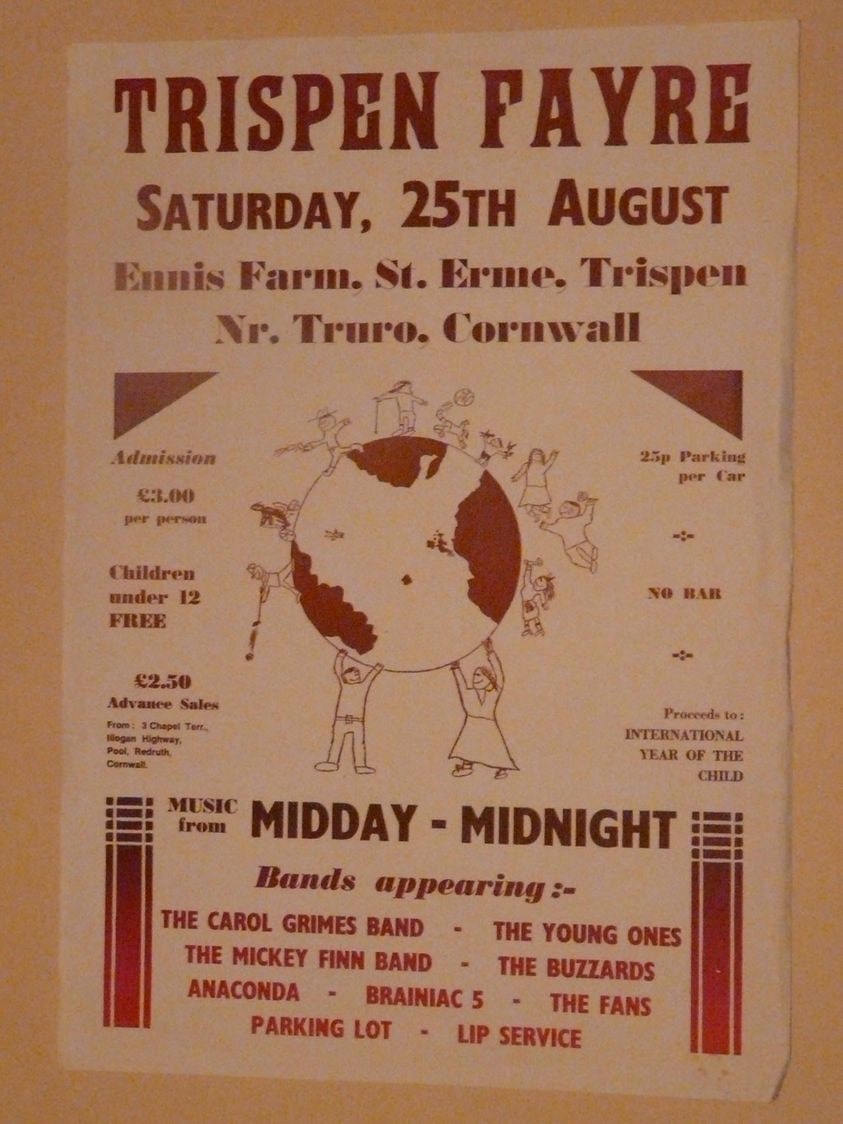
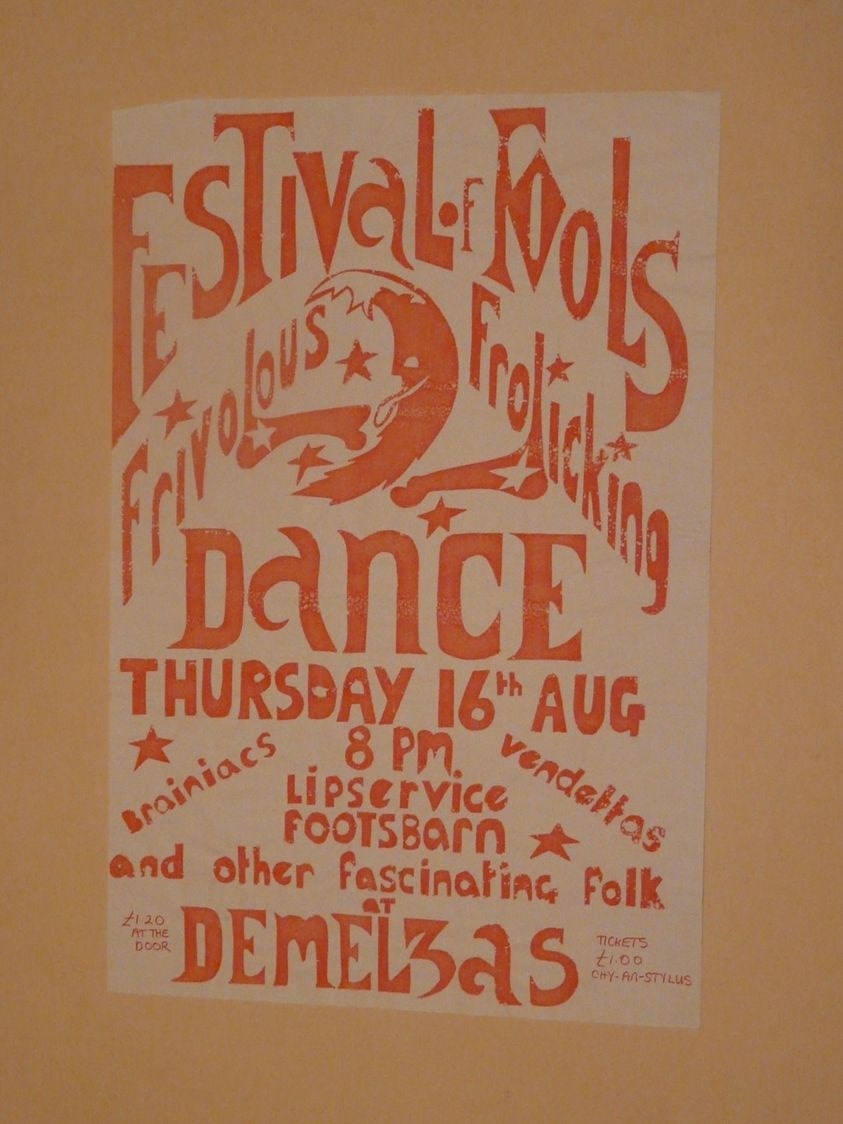
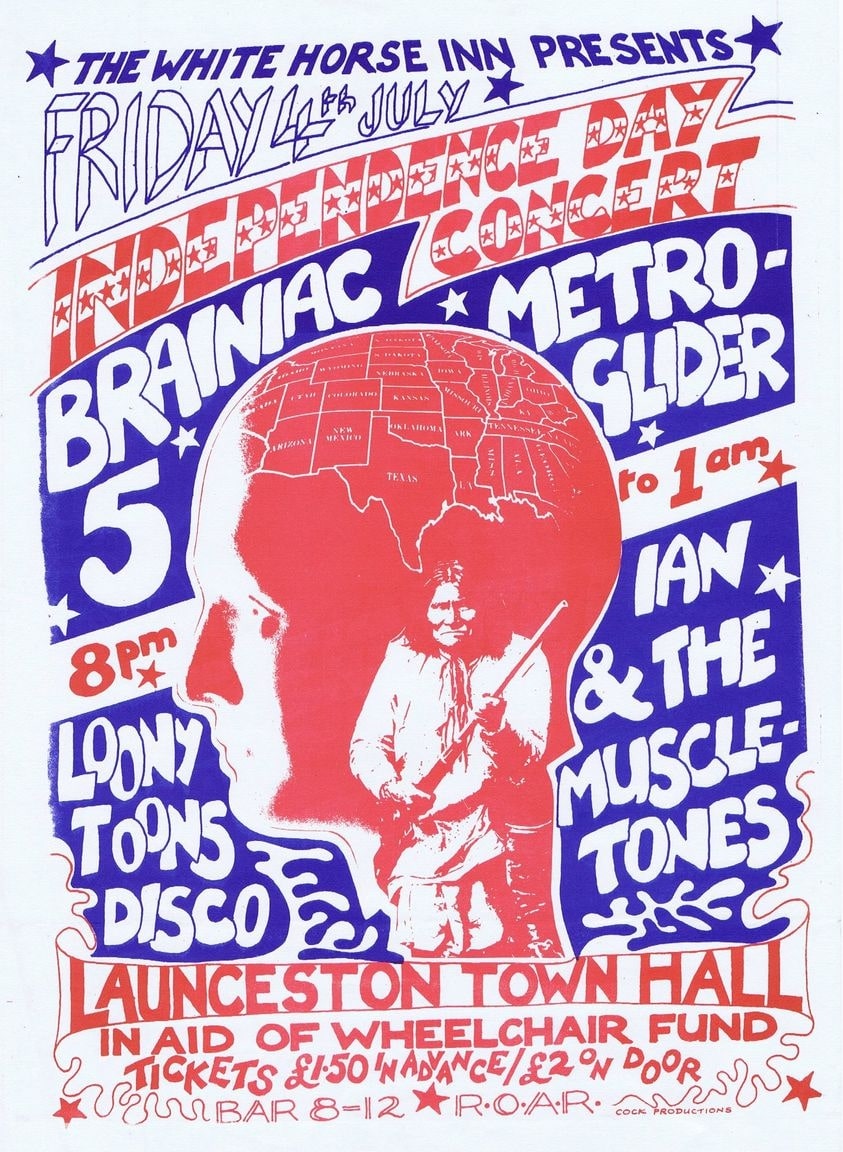
I hope you don’t mind if we delve once more into the history of your band. Would you like to share about your upbringing? Where did you all grow up? Tell us about daily life during your teenage years.
Charlie: I was born in Sunderland and moved to Woking in Surrey at the age of ten. Daily life was typical for the time: going to school, cycling all over the place, train and plane spotting, and enjoying package holidays to Spain with my parents and brother during the summer.
Woody: I was born just at the end of the Second World War to working-class parents. Initially, there was rationing and a general shortage of things, including basic amenities like an outside toilet and a tin bath in front of the dining room fire. We relied on deliveries from the milkman and coalman, who used a horse and cart. Despite these humble beginnings, I don’t feel like I suffered. My parents never owned a car, and I was around 11 when we first got a TV or phone. Looking back, it feels like my childhood belonged in my grandmother’s time.
I started working part-time at fourteen and left school at sixteen to begin a Structural Engineering apprenticeship, attending college on day release. So, I became independent quite early on. Fortunately, I was born in a time when it was financially feasible to pursue higher education, job opportunities were abundant, and I entered adulthood during the vibrant 1960s. Buying a house was relatively easy for me. I feel sorry for young people today, facing much tougher economic circumstances.
Was there a certain scene you were part of, maybe you had some favourite hangout places?
Charlie: While I was at school, I attended an early Cream gig at the Atalanta Ballroom in Woking with an audience of about 20, which had a strong effect on me. I frequented The Toby Jug in Tolworth two or three times a month, where I saw performances by John Mayall, Beefheart, Colosseum, Ten Years After, Fleetwood Mac, Jethro Tull, and many others. Seeing Jimi Hendrix at the Saville Theatre had a huge impact on me, offering a window into another world of possibilities.
Woody: This could have been my specialist subject if I had been on Mastermind, as I was in the epicenter of the birth of the 1960s Blues Boom centered around London and Richmond. I could go on and on about it. Let’s see how it goes. I was born in South London, which was still part of Kent back then. It took me about 45 minutes to get to Central London. Surprisingly, my Mum and Dad allowed me to start going there on my own for jazz concerts when I was 15.
The first actual club I went to was Ronnie Scott’s (at the original Gerrard Street location). I was 16 and went with two older boys to see the bop trumpeter, Jimmy Deucher. I was very impressed with him as he played a tilted-up trumpet, like Dizzy Gillespie.
My first festival was the same year, 1960, when I went to the Beaulieu Jazz Festival. I went to see Tubby Hayes and Ronnie Scott, but I also had my first exposure to live Trad Jazz with the likes of Acker Bilk playing. This was the first time my photo appeared in a newspaper. The News of the World. They were reporting on the festival and there was a photo of me with a group of other people. The caption hilariously read, “See the chicks and ravens parting,” which obviously should have read “see the chicks and ravers partying.” That was me, a raver partying. Cool man. Carry on as you mean to, I say.
From there, I got into the burgeoning trad jazz scene. Colyer’s and the 100 Club. Colyer’s was mostly because it stayed open very late. There was a little bit of blues featured at these venues, and from that, I found out about Cyril Davies and Alexis Korner’s Blues and Barrelhouse Club at the Round House pub in Wardour Street. Geoff Bradford was the house guitarist and people like Long John Baldry and Davy Graham played, together with folk acts like Bob Devonport. American artists like Big Bill Broonzy and Sonny Terry and Brownie McGee also performed there. All in a room that held about 30 people.
By 1961, Cyril and Alexis moved to the Ealing Jazz Club, where future members of the Rolling Stones first performed. I never went there, but they quickly moved to Thursday nights at the original Marquee on Oxford Street. I went there right from the start. It was the kind of gig where everyone knew everyone. I met Eric Clapton there and we became quite good friends. I was also on chatting terms with the likes of Rod Stewart, Mick Jagger, Brian Jones, and Keith Richards. I was there for the first Stones gig, but in various different combinations, they did play in the intervals before that.
Things went a bit mad after that and there were loads of new R&B bands forming. The Stones started their Sunday night residency at the Station Hotel Richmond, where things were flying. For a while, I worked as security on the back door there for Giorgio Gomelsky and helped him out a bit looking after performers at the blues concerts that he put on at the Fairfield Halls in Croydon. I remember meeting Big Joe Williams and Muddy Waters there. I was also at the Station Hotel when the Beatles came to see the Rolling Stones. I was in the car that was driving two of them back to The Scene Club after the gig, but for the life of me, I can’t remember which two.
Speaking of the Scene, that was where I met Guy Stevens. Before The Mods moved in, the Scene was just about the coolest place to be. Guy was one of the DJs there, and his nights were legendary. At that time, he probably had the biggest collection of blues, rhythm and blues, and rock and roll records in the country. He was working with PYE putting out some of the earliest rhythm and blues records in the UK, including Chuck Berry, Bo Diddley, Howlin’ Wolf, and Muddy Waters, the yellow label releases. He had this really small flat in Excel Court, above The Coffee Ann coffee bar that was a popular late-night hangout. I used to sleep there a few nights a week along with people like Clapton. Guy was the president of various fan clubs like The Jimmy Reed Fan Club, The Jerry Lee Lewis Fan Club, etc., and people would turn up from all over the country to sit up all night listening to records. It was hard work getting to sleep.
Guy was also writing reviews for the Record Mirror, and I used to ride shotgun with him on some of his interviews. I remember doing ones with John Mayall and the Animals when they played in London for the first time, at the Scene, and going to the Brixton Odeon for a Bo Diddley one. I also used to lig into gigs with him. A particularly good one was at the Hammersmith Odeon with the Rolling Stones, Bo Diddley, Little Richard, and the Everly Brothers. The Everly Brothers went on last, after Little Richard, and managed to hold their own, which is quite something.
Other highlights from the period were my many trips to the Crawdaddy at Richmond Athletics Ground on Sundays, where the Yardbirds were resident. I got to know them through Eric Clapton and met Sonny Boy Williamson when he played with them.
Then there were the Sunday afternoon gigs at the 51 Club (formerly the Ken Colyer Club), where the Stones and bands like The Downliners Sect played. Oh, and Klooks Kleek in West Hampstead, where I used to see The Graham Bond Organisation, amongst others. And, of course, The Flamingo in Wardour Street, where Georgie Fame’s Blue Flames were resident.
I also kept up going to see jazz, and one of my favorite regular gigs was the Sunday morning jam (12:00-2:00) at the Tally Ho in Kentish Town (later famous for pub rock). The top British players played there, such as Joe Harriott, Phil Seaman, and the like, but also visiting UK musicians would turn up. I saw Benny Carter and Ben Webster there.
I could go on with loads more anecdotes and gigs, but I think you get the picture.
If we would step into your teenage room, what kind of records, fanzines, posters et cetera would we find there?
Charlie: Kenny Ball’s ‘Greatest Hits,’ John Mayall’s Bluesbreakers with Eric Clapton, Beefheart: ‘Safe As Milk,’ Sun Ra: ‘Heliocentric Worlds Vol.2,’ John Fahey: ‘Blind Joe Death,’ Hendrix: ‘Are You Experienced,’ Albert Ayler: ‘Spiritual Unity’. EPs by The Kinks, The Pretty Things, The Beatles, The Rolling Stones. Favorite single: ‘Purple Haze,’ which I wore out with constant playing.
Woody: I never had any band posters, just pictures of Brigitte Bardot.
I started buying records when I was 11. Little Richard, Jerry Lee Lewis, and Fats Domino, all on 78 RPM. I still have those records now. I have a fond memory of my mum at that time taking me to see ‘Rock Around the Clock’. We sat at the back and there were all these Rockers down the front smashing the seats up. My mum was totally unfazed.
By about 14, I was buying jazz records across the full range of jazz, from Louis Armstrong Hot 5 to Charlie Mingus, in no particular sequence. It was not until I was 16/17 that blues music records were available, and then I got lots of those. By that time, I was buying NME, Melody Maker, etc. I was quite proud to have my photo, dancing, in a center spread about Alexis Korner’s Blues Incorporated at The Marquee (the original one on Oxford Street).
By the time psych hit, I had long left my teenage room, was married, and was living in Montreal where Leonard Cohen was just becoming a big thing.
How did The Half Human Band come together?
Charlie: We met when we were studying at Oxford University in 1969. We were “scholarship boys,” meaning we didn’t have wealthy or aristocratic parents. The original lineup was “Hairy” Mart Isaacs on slide guitar and vocals, Nick Beesley on bass, Martin Griffin on drums, and me on guitar and vocals. Our first rehearsal was in an ecclesiastical chapel in New College. The first number we played was “House Of The Rising Sun.” Mart was an accomplished slide guitar player so we played numbers to feature him, such as “Rolling & Tumbling.” As time went by, both Mart and I started to write songs. Two of his I remember are “Thermopylae” (he was a Classics scholar) and “Mama’s Got A Brand New Leg.” It was easy to find gigs around Oxford at college dances and balls. We were huge fans of Van Der Graaf Generator and Kevin Ayers & The Whole World and found ourselves on the same bills a number of times. We were also big fans of the Velvet Underground (especially “Sister Ray”), the Grateful Dead, and the MC5. Our sound became more psychedelic as time went by. We stopped having set lists but would start an improv as soon as we arrived on stage and stop after about an hour, passing through various songs on the way. None of this was recorded. Nick left in 1970 and was replaced by Dave Pugh. This lineup recorded all the songs we were then playing, but the tape has been lost. In 2011, the Brainiac 5 recorded two Half Human Band songs, “Matelot Mick” and “Kabul,” which give a rough idea of what the Half Human Band sounded like. These were released on the 10” “Space Is The Place” record.
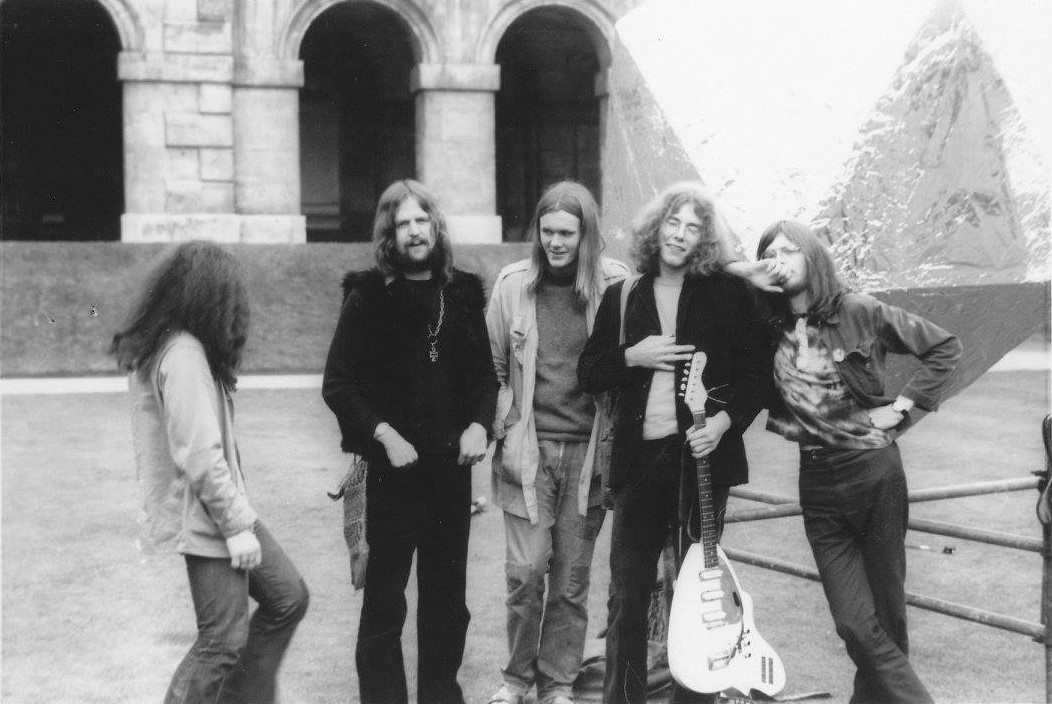
In 1971, we played support for Caravan in Aylesbury and ELO in Guildford. We also played at the first Windsor Park free festival just after Kraan and just before the Pink Fairies, both of whom were 100% amazing that day. After playing, we were approached by Ian Jones who offered to become our manager. He found us a number of Gay Lib gigs in London. Both Dave and I left around this time to pursue non-musical career options. Nick Beesley and his friend Guy Shippobotham replaced us, and the band went on to be successful on the progressive rock circuit in Europe before breaking up a few years later.
I ended up in Cornwall where I played in the folk clubs with local poet/musician Bert Biscoe. Woody started up Jacey’s Blues Bar in Penzance. The Brainiac 5 developed out of various short-lived bands that played there.
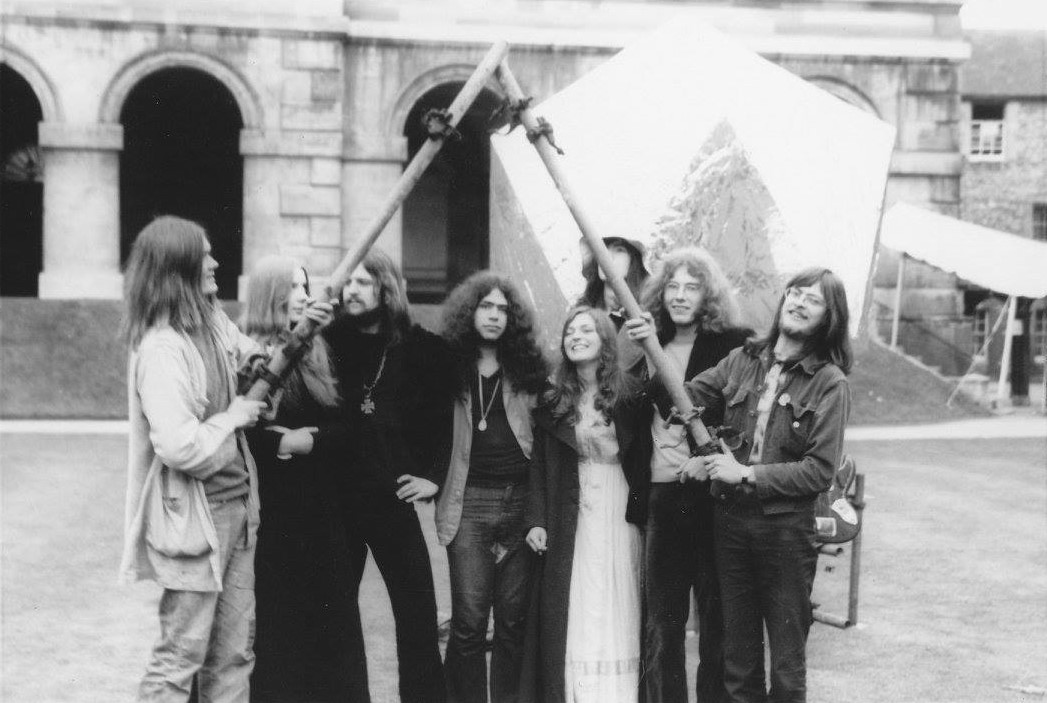
The band was well known in the circles of the UK Free Festivals movement. There’s a fantastic book called ‘Festivalized: Music, Politics, and Alternative Culture’ by Ian Abrahams & Bridget Wishart. Would you like to elaborate on how you see the scene from today’s perspective?
Charlie: We assumed the world would change when all the old people died off and a new age of peace and love would emerge. Seems a bit naive now.

Were there any bands that haven’t really recorded much but are worth mentioning?
Charlie: Some obscure favorites that we listened to over and over: Quiver, Clear Light, Ars Nova, Earth Opera, Pete Brown’s Battered Ornaments.
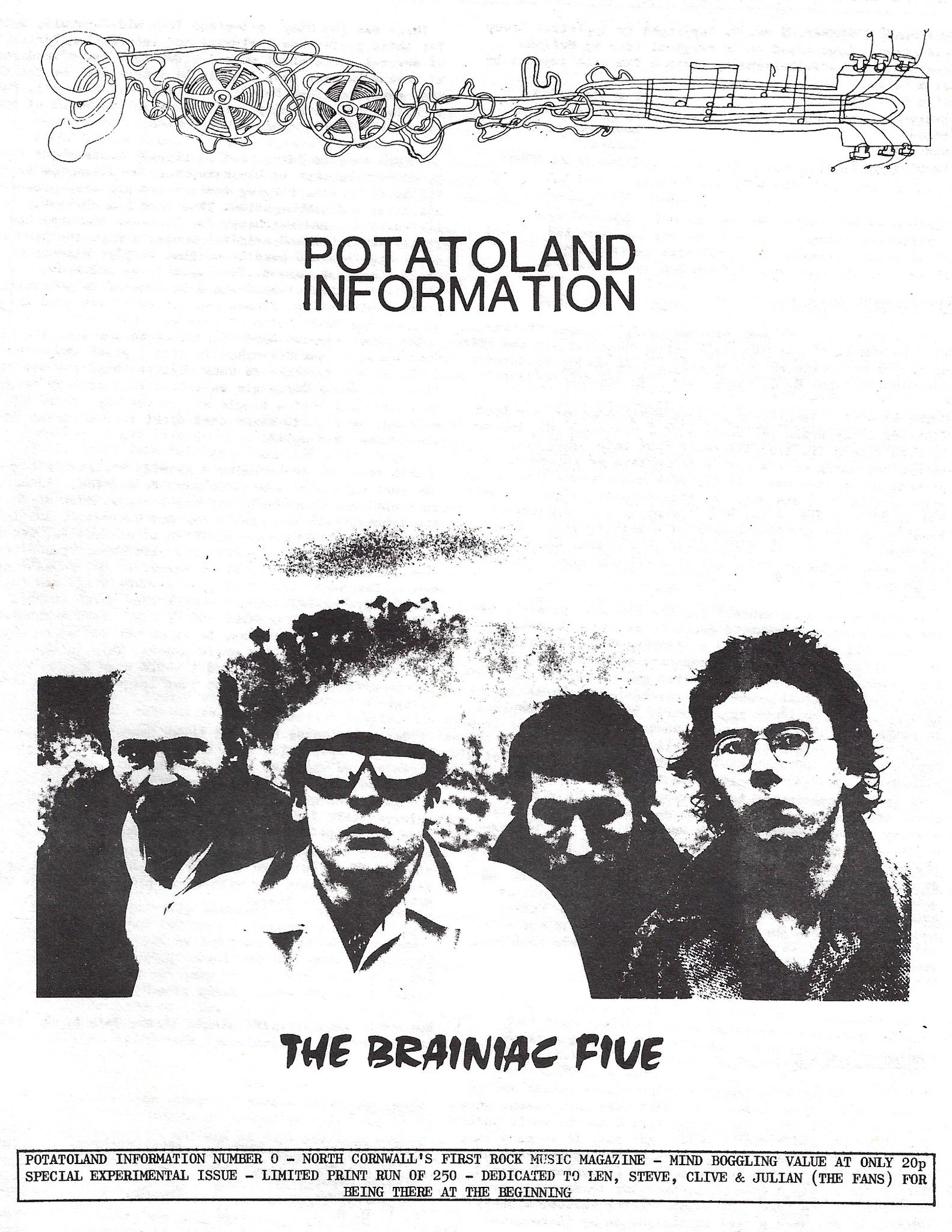
What was it like to play Windsor and Trentishoe?
Charlie: I left the band before Trentishoe. At Windsor, we had another gig in the evening so we played in the afternoon. There was a large drug squad presence there, middle-aged policemen dressed up in flared jeans and Afghan coats. I was “invited” into the back of one of their cars, where I was interrogated about the drug use of everyone I knew and particularly Mart Griffin, who they seemed to be very interested in. I pled ignorance, and they let me go after about half an hour. They were surprisingly polite though there was a sense things could have turned nasty if I said the wrong thing.
Steve Hudson: I was there at Windsor as a callow youth of 16 having just sat my O level exams. I remember a gathering in a wooded area with a band playing and almost as many police as “heads”. At the time I wasn’t playing any instruments but would have a bash on my older brother’s drum kit but I couldn’t manage to hold down a beat. It was that same kit that I would buy from my brother a couple of years later which I played with the Brainiacs and can be heard on the early recordings. I remember The Half Human Band playing a long guitar jam, possibly an extended version of ‘Matelot Mick’ or ‘Kabul.’ Little did I know that I would record these very numbers around forty years later…
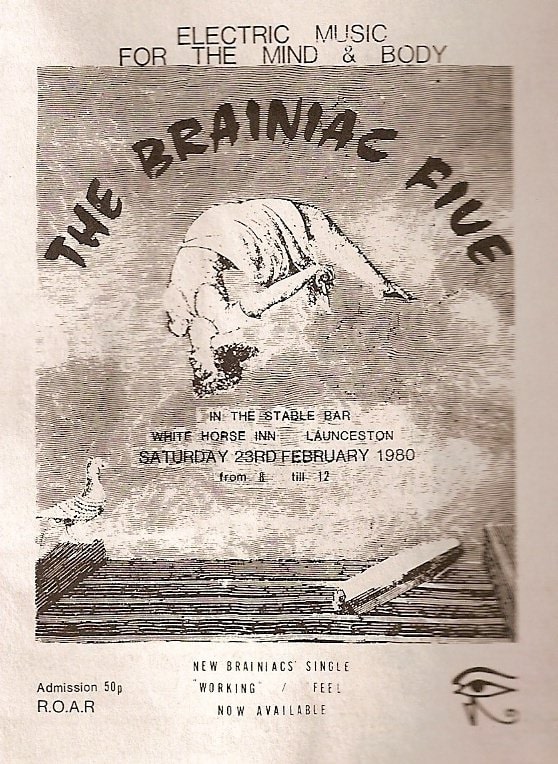
“We all took LSD a few times in 1970”
Did you also experiment with psychedelics?
Charlie: We all took LSD a few times in 1970. I remember communing with God, becoming one with the universe, etc. We got into some very high mental states but after a while, we realized it was pointless as nothing much remained afterward. I looked around for natural ways to achieve those states and joined a group studying Russian mystics Gurdjieff and Ouspensky. The idea was to “be present” as often as possible. It didn’t lead anywhere and I concluded that normal everyday consciousness is all anyone needs.
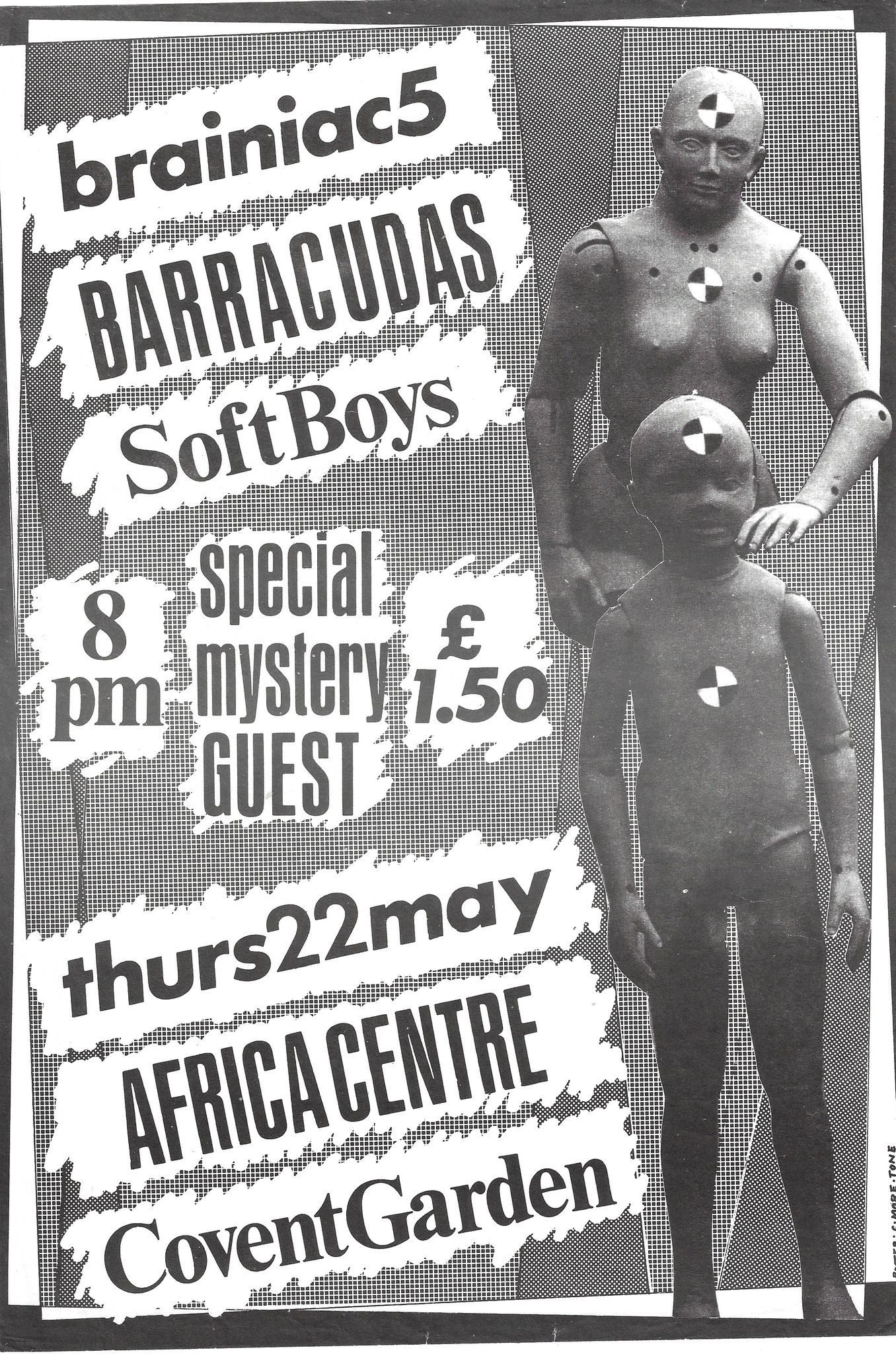
Who was saxophonist Pete McPhail and poet Crazy George?
Charlie: Pete McPhail played sax with the Half Human Band from time to time when we were playing long improvised passages. I came across him again a couple of years ago playing in a free-jazz outfit in London – an excellent player.
Crazy George was a local character who had probably taken too much LSD and could be found declaiming his poetry on street corners in Oxford. I’ve spent time with a few so-called ‘acid casualties,’ and they usually have some interesting things to say if you listen to them. Their thought patterns are very different from yours and mine. Crazy George had an open invitation to turn up at our gigs and declaim his poetry in the quieter sections of an improv.
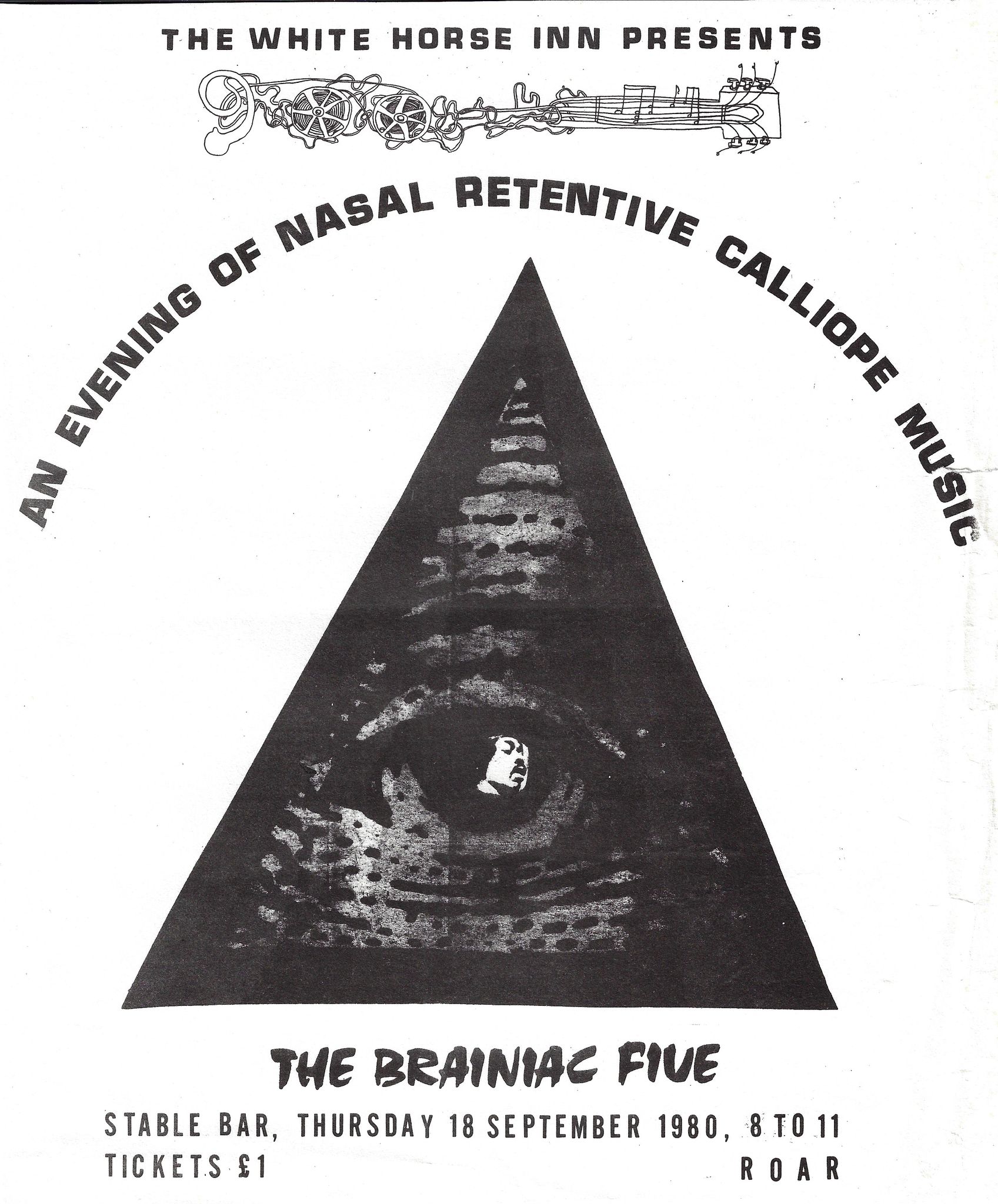
What would be the craziest gig The Half Human Band did?
Charlie: I asked Dave Pugh this question, and he reminded me that we were booked by Cheltenham Ladies College for a dance for the sixth form girls. A friend of a friend knew someone there and suggested us as a joke, but somehow it actually happened. The money was very good. The younger girls were told to stay upstairs but were watching and waving from the windows as we arrived. The staff and sixth form girls were very formal but seemed to enjoy the show. Crazy George insisted on dancing with the Head Mistress. She bopped with him and remained admirably unperturbed by his flamboyant leaps and gesticulations – I was impressed!
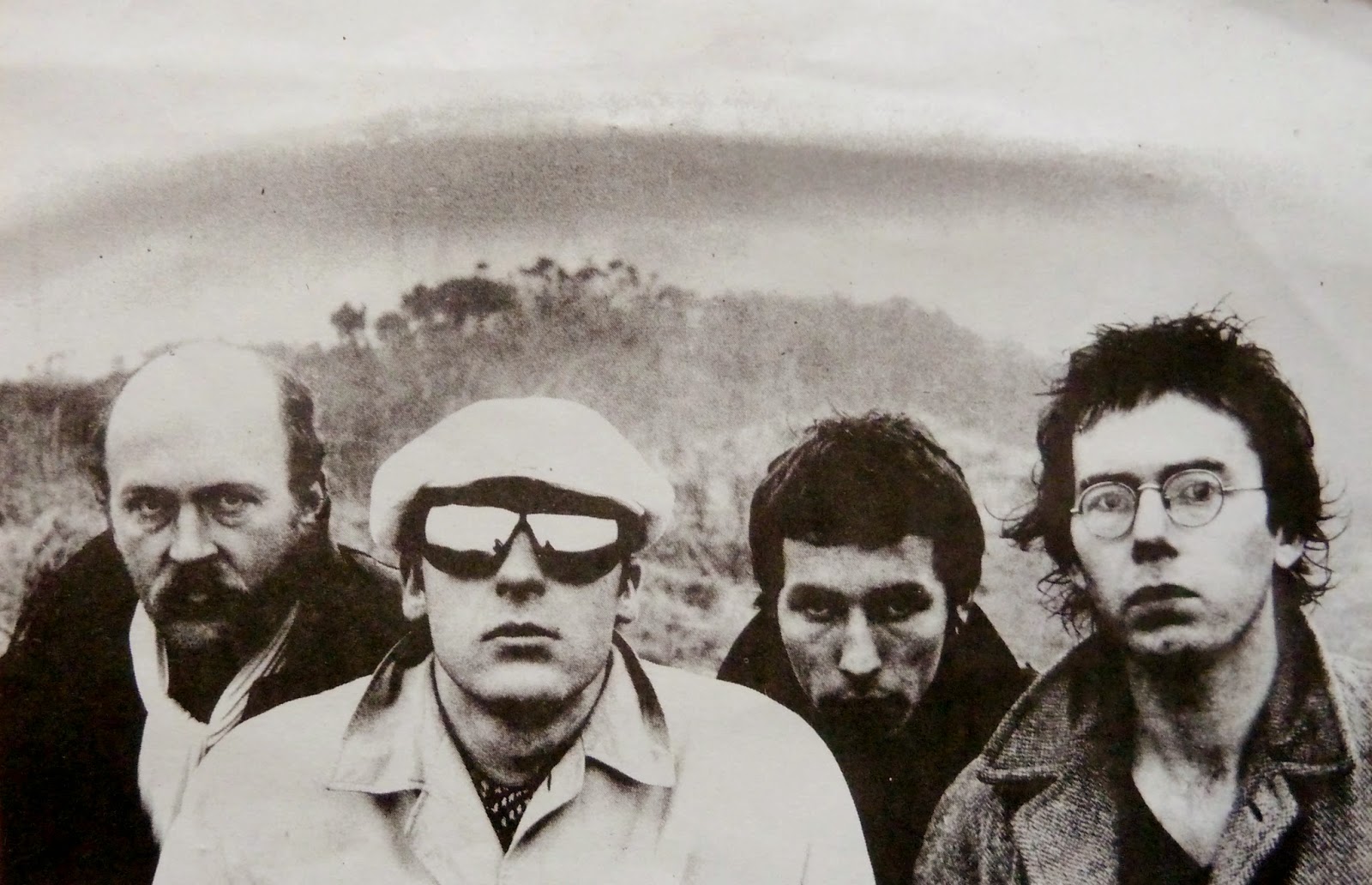
Some recordings were made but subsequently lost. Do you think there’s a chance to find them? It would be amazing to hear it.
Charlie: If only! I’ve searched everywhere and asked everyone who might have them, but no luck so far.
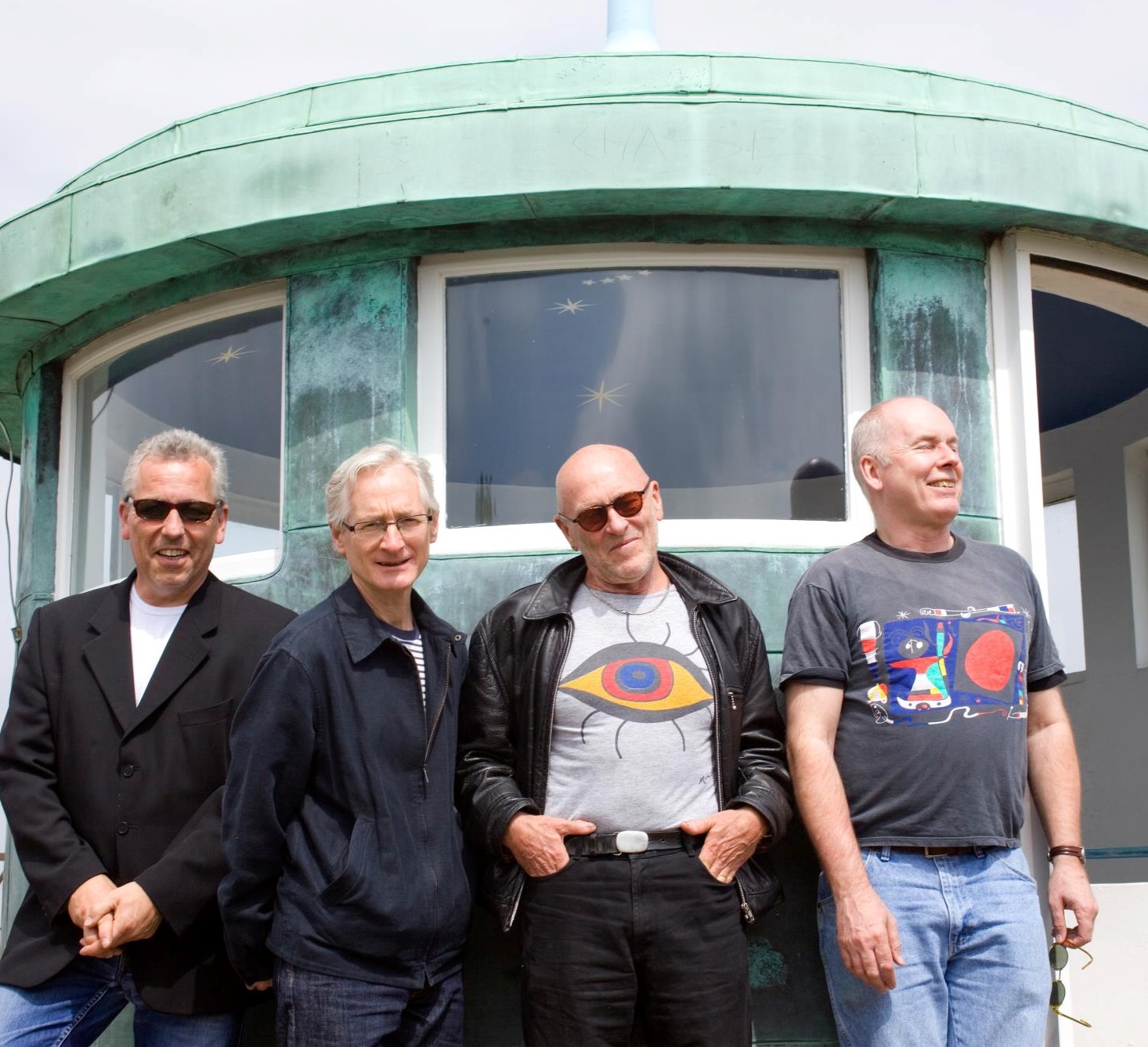
Were any of you involved with any other musical projects?
Charlie: In the US, I didn’t pick up a guitar for ten years or so, but in San Francisco, I became friendly with Henry Kaiser who kindly gave me a guitar to start practicing with. I started up a band called Brian’s Head which issued one CD on the Reckless label, but at that time I was mostly occupied with running the business.
Bert: After The Brainiacs, I went on to form Metro Glider and the Rage, who performed all over the West Country. Chrissy (The Mermaid of Zennor) Quayle was in Metro Glider. As noted elsewhere, she has been contributing to the recent B5 albums. She is a real musical trouper, full of melody and harmony and always vocally insightful, in addition to being no mean sax player. Tim “Vulch” Chapple was the bass player in The Rage. He played with The Vendettas way back in the Jacey’s days and is currently playing in a handful of bands in West Penwith and banging out loads of original recordings on YouTube.
I did retreat for a while after that, but more recently I have done some recording with a chap called Tony Lamb – a CD called ‘Fest of Worms’ (on YouTube). He had bought a book of my poems and made some instrumental tracks. He and I clicked creatively, and I found ways to perform the poems he wanted, and they sounded fresh and quirky. Later we did a film with Brett Harvey, called ‘Waterwheels or Bust’ (also on YouTube).
Currently, I seem to have gone full circle and am running a folk club in Truro and performing my original songs with acoustic guitar and reciting poetry. In fact, this endeavor has resulted in a couple of trips to the USA to perform. There seems to be interest there in my Cornish persona.
Woody: In the 1980s, I played with a couple of bands. One was The Man Rays. Two members were earnest young men who had played in a band called Missing Chemicals, from Exeter, and were associated with Len Gammon/The Fans. Jon Tye and Pete D’Adamo. The drummer was someone who I knew from bands in Cornwall called Adam. I can’t recall his surname. He was a good drummer but was a bit of an alcoholic, which made him unpredictable. They had some good original tunes, and Pete had an interesting way of switching on a mic’d up short-wave radio tuned between stations and playing guitar solos with it. It sounds a bit mad, but it actually worked sometimes (but not always). We played eclectic places like Chats Palace in Hackney and some quite wacky community-run churches. Our big claim to fame was supporting A Certain Ratio at Exeter University.
After that, I joined Dave Brook’s Silly Boy Lemon. I knew him from the festival circuit in Cornwall. He sang and played sax and flute. He also played Highland Bagpipes. We had some sort of New Orleans feel numbers and something called “The Bagpipe Boogie” for him to play those on. He also wrote tunes. The music was a real mash-up of punk, blues, jazz, reggae, and traditional Irish music, often violently swinging from one to another. The bagpipes are in Bb or Eb, but he used to have to nip outside and play them for a bit to warm them up and hopefully get them up into concert pitch. We had a residency in The St Georges Theatre Bar, in Tufnell Park, which was a nice gig. One time both guitarists in the band could not make the gig and Dave got Jim Mullen, who had played in Kokomo, to play with us there, which was quite an experience.
Dave was also a friend of Davy Graham, and he was the guitarist with the band for a bit for some gigs and small festivals, but he was not in great shape at the time.
Dave got offered the job of playing bagpipes on stage for the musical Brigadoon. The job paid well so he took it.
My old friend Sunshine Val Baker was up in London at that time, so he took Dave’s place singing and playing piano, but that was only a temporary thing as he was only in London for a while, doing some building work. I had done the structural design for the job, and just a funny little name drop, Chris Jagger, Mick’s brother, who was a friend of Sunshine, was doing the laboring. There you go. I am full of interesting little bits of information.
Thinking about this reminds me of an amusing incident while Sunshine was in London.
Sunshine is quite a handy, very authentic-sounding, boogie-woogie pianist (although sometimes of the 13 ½ bar blues nature) and has always rocked a very 1960s West Penwith hippy look.
Anyway, we got put on the guest list of a concert by classical pianist/composer Graham Fitkin at the Royal Academy of Music by his brother Chris, who I knew from years ago playing together in Cornwall, in Trial by Error. The concert was in a room at the Academy that held about 100 people and there was only a very low stage at the front with Graham’s grand piano on it. Everyone was in suits except us. The music was classical and quite minimalist. The whole vibe was profoundly serious.
At the interval, Sunshine jumped up and started walking to the front, saying he would go and play some boogie-woogie. I had to run after him and pull him back. In the second half, watching Sunshine with the hump gave me a serious fit of laughing. You just can’t take him anywhere. Not sure we would get invited again.
After that, I stopped playing for good, or at least until Charlie phoned me up nearly 30 years later.
Steve: I remember sitting in with Silly Boy Lemon at one of those Tufnell Park gigs and even going so far as to rehearse once or twice. I met the guitarist Ralph who asked me if I would play with him in a band he was putting together with a Canadian guy called Mike “Frenchie” Rock (probably not his real name). It was a four-piece band with a mother and daughter duo on backing vocals. As they rehearsed just up the road from where I was living at the time, I agreed. This would have been around 1986/87, and I found myself playing at the Royal Albert Hall with them at some kind of charity ball gig. A few weeks later, we were booked into Abbey Road (Studio 2 no less) and I thought, maybe this is going somewhere. It was quite an experience but fell apart when the money that was supposed to be backing the whole affair turned out to be non-existent, and it was all being run on lines of credit which eventually ran out. All performed under the name of Rock Circus – to say we all felt like clowns when it all fell apart is an understatement.
I also spent some wonderful times playing with Duncan and Richard Booth in a rocking country outfit called Audio Murphy. Ahead of our time in the late 80s and London wasn’t quite ready for us. A family followed quickly after and despite trying for a while, the commitment that a young family brings meant I had less time to fool around in bands. Pretty much stopped playing bar the occasional jam until The Brainiac Five ‘Space Is The Place’ sessions and a few gigs followed. I didn’t really want the commitment and The Brainiac Five version four emerged. I still enjoyed going to their gigs and you would find me cheering them on if they decide to promote the latest disc.
Richard: I didn’t play live for 3 years after the demise of the band, spending most of my time running an interiors business, but also writing and recording demos, assisted by Duncan Kerr and members of The Darts, who he had now joined. I also did a spell of sound engineering for The Darts at various gigs and their West End show (Yakety Yak!) at The Astoria Theatre with Paul McGann and his brothers in the cast.
One evening I had a call from Chrissy Quayle inviting me to audition for Farenji Warriors, a seven-piece Afro-Reggae band. I went along, not really thinking it was my thing, but it turned out to be a really pro band with lots of work. The jam went well and when they asked me to join I agreed. That lasted about six months or so, again lots of great gigs and a BBC Radio 2 session produced by John Porter, but eventually I decided it really wasn’t my thing, so I departed, but having learned a lot from playing with African and West Indian musicians.
More bands followed, my favorite being Audio Murphy, a rocking country band, along with Steve… Our first gig being an epic performance at The Acorn Theatre, Penzance. Duncan joined a little later and we went on for some years, once voted the best country band in London! That band ran its course, day jobs and family commitments ruling out further advances.
In 2005, I recorded a solo album, which wasn’t commercially released but available on request. In the same year, I formed my own band, The Richard Booth Band, with Duncan, Ken Whaley on bass (ex Help Yourself, Barry Melton Band sideman, and also still with The Green Ray), and on the first gig, Andrew Rankin (The Pogues), on drums. The band was going really well until after the 4th gig when I had to stop because of hearing problems. I could no longer cope with the volume and had developed tinnitus!
I moved to Wales in 2007 and slowly integrated into the local folk/singer-songwriter scene, adapting my material to fit. This resulted in the “rbtrio” band with guitar, mandolin, and piano. We recorded the album ‘Spill The Moon’ in 2014, which received excellent reviews. I’m currently working as a duo with mandolin supremo Cornelius Eger and in the final stages of recording an album (as yet untitled) to be released very shortly. There is also an already recorded solo album to be released later this year.
The solo album ‘Passion Day’ (2005) and the rbtrio album ‘Spill The Moon’ (2014) are both available as CDs through the Brainiac 5 Facebook page and ‘Spill The Moon’ is on Bandcamp for download only.
Duncan: If there are Brainiac fans who are desperate for details of my power pop band The Favourites (active 1978 to 1979), you can find them on the website “thefavourites.net.” This website was created to accompany the 2017 release of most of the band’s recorded output. Since that time, I have located about half a dozen other lost studio tracks, all original, and two noisy live gigs. I’m not planning on releasing it on vinyl or CD because it is all on cassettes and would need digital transfers, but maybe I should get it done before it’s too late!
[Musical Warning – The Favourites don’t sound like Brainiac 5!]
During 1974 to 1977, I was playing in my first band Plummet Airlines at roughly the same time as Charlie and Woody in the B5. There’s a whole different trajectory in the Plummets (and The Favourites). I’ve played in about 10 bands, mostly with at least one other Plummeteer and/or others from those bands. Like Charles and Woody, I’ve had times when I wasn’t doing much except working and helping bring up our twins. But I’ve also had times when I don’t know how I could have fitted so many bands into my diary, in the early 80s to about 1987, all playing gigs in London. Very varied types of music, but not like B5. The only resemblance was that, playing in London, most of the time was only for the love of playing; money didn’t come into it. A tenner per musician might be common. Not much more than in the sixties and seventies!
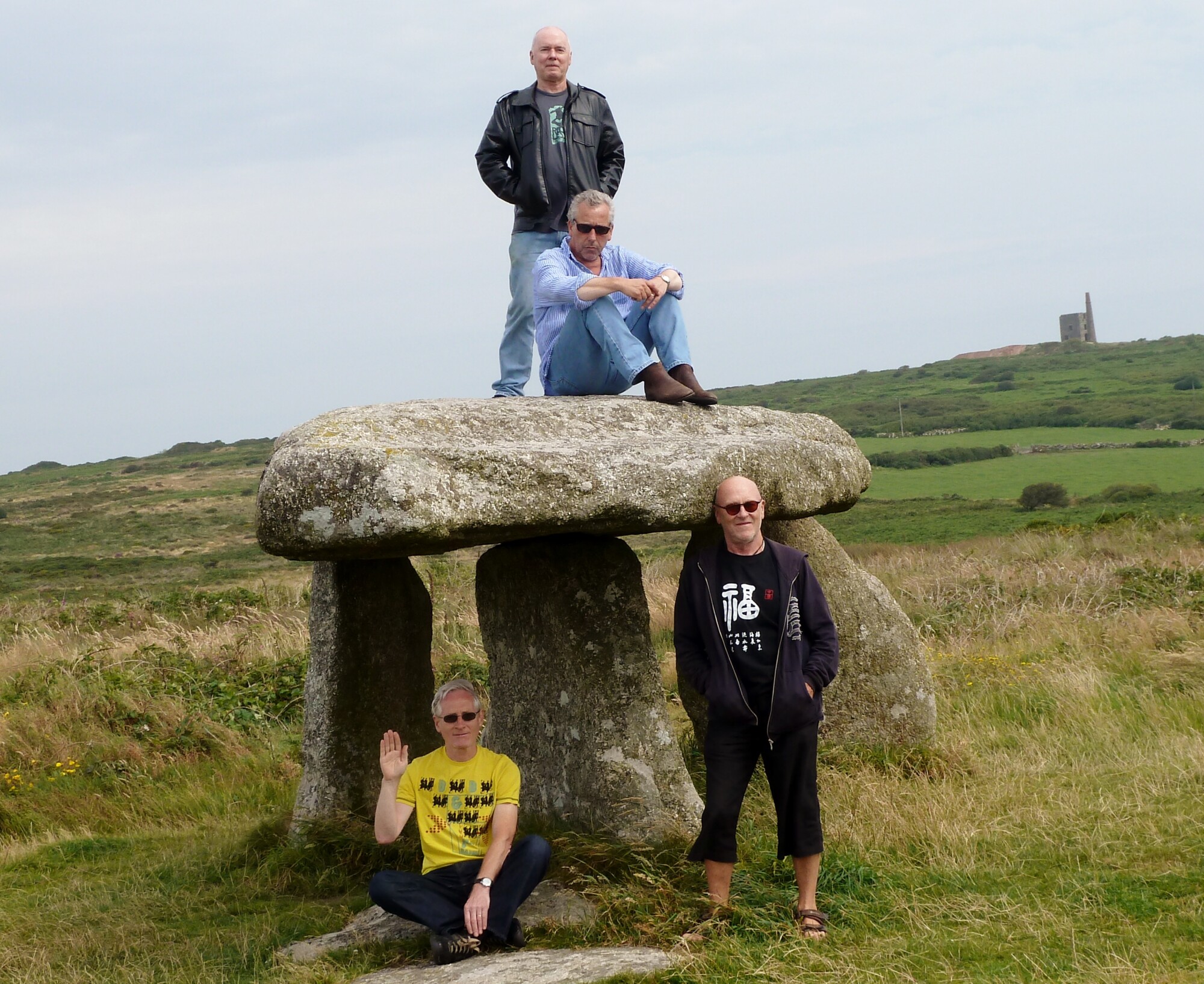
What kind of gear and instruments are you playing these days?
Woody: I am not such an equipment fiend as the others. When the B5 started up again, I just brought a new Fender Precision bass and a TC Electronic BG250 combo. The amp is not small, but it is light, making it good for gigs. I have only ever used an effects pedal once. That was an octave divider on the track ‘Laura Riding’ from ‘The Journey to X’ album.
For recording, I normally DI the bass, but for my various bits and pieces, I use an Ashdown Electric Blue 180. I like the amp, but it is a bit heavy to carry about for gigs.
I have a Tanglewood acoustic bass that I quite like using when I am sitting about at home working things out.
I use Hohner Blues Harps.
I have three different sizes of Jew’s Harps, but they are just bog standard. Nothing fancy.
I have collected quite a few Kalimbas of varying designs, but I use just two types for recording.
The acoustic ones are ten tine, hollow body tuned to the song. For the treated Kalimba, I use a solid body one with only five tines, normally tuned to a minor chord. The hollow body ones are prone to feedback too much. I treat the kalimba using an overdrive pedal and an octave divider. The idea is to crank these up until feedback, then drop them back a bit. Both types of Kalimba have mandolin pickups tapped on.
I got the idea for treating the Kalimba from hearing Konono No1 the first time they played at the WOMAD festival. They really did make a beautiful unholy racket.
Charlie: I’m mostly playing a Schecter Diamond Series guitar with active pickups through a Boss ME-60 multi-effects unit to a Tech 21 amp.
Duncan: I’ve currently got a dozen or so guitars, some of which I’ve had for at least thirty-odd years. For Brainiac 5, I mostly used a 1974 Gibson L6S, quite like a Gibson SG, customized and repainted a salmon/orange-ish color, which formerly belonged to Billy Bremner of Rockpile. He was planning on buying it back when he could, but it never happened. I’ve played it for lots of bands now – it covers a lot of styles. I’d not want to sell it now…, sorry, Billy…
I’ve played a 1963 Gibson 330 for 35 years. Lovely to play, nice mellow back pick-up, but the bridge pick-up could be more punchy. But it’s all original and I just keep it as it was. I also have an Epiphone Casino, which was built in the Gibson/Epiphone Kalamazoo factory. They were almost identical to look at, and the Casinos were good enough for the Beatles to play for most of their seven years, even though cheaper. The two guitars are only eight serial numbers apart, meaning that they rolled off the production line within a few days apart or even less. I have another Casino, blond and beautiful, given to me by Michael Proudfoot, in whose band I played for 20 years before he passed away from cancer. He’d already given me a Fender Squier Thinline Telecaster, and I bought a Taylor 12-string acoustic from him. For that same band, I have also played a 1970s Fender Stratocaster, and I’ve played it with various other bands. Recently, I’ve been playing a Mexican-made Fender Telecaster.
For equipment, I’ve tried various but have hung on to a Fender Vibrolux, a MusicMan 2 x 10 combo, and a revived Orange combo too. But they all get heavier every year, I swear…. I should have bought one of the small-but-loud combos which everybody else has moved over to. I can barely carry them now!
Richard: With Brainiac 5, guitar:- 1963 Gibson SG Special, and custom-built Parallelogram guitar (main guitar with B5, sadly stolen after leaving at Woody’s house for safekeeping when I was away visiting… he was burgled!).
Amp:- Marshall JTM 45 head and Ampeg V4 4×12 cab.
Current: Guitar:- Danelectro Convertible (modified).
Amp:- AER 60mk2/1985 Fender Studio combo.
Also PRS Semi-Hollow guitar and Ashdown 20-watt combo amp for “rockier gigs” (including one with The Green Ray supporting a later Brainiac 5 incarnation in 2020).
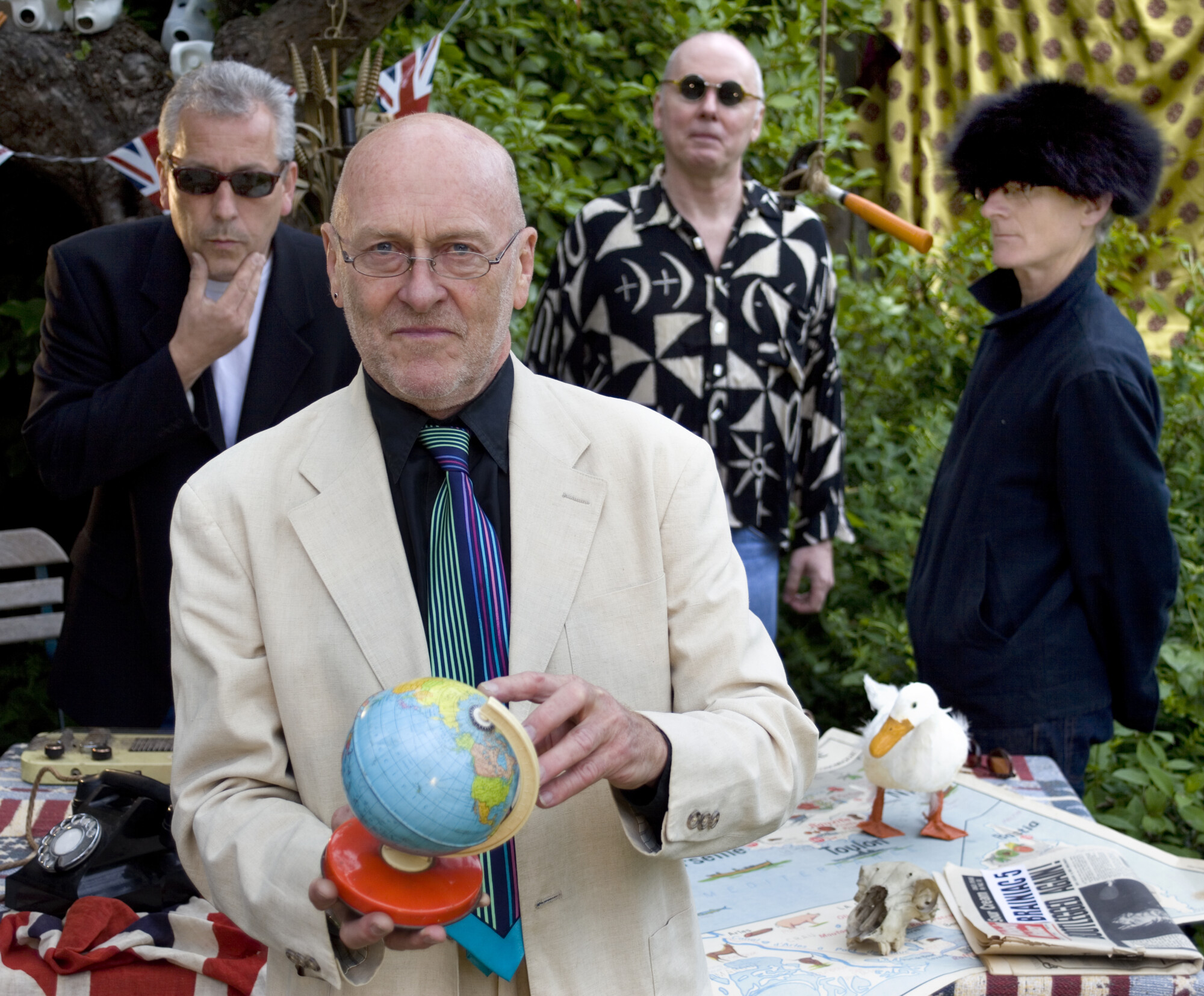
What else currently occupies your life?
Charlie: I’ve moved to Spain and particularly enjoy paddling in the Mediterranean.
Woody: Apart from recently getting married again and now having a 12-year-old stepdaughter, not much has changed over the years. I am still off out going to lots of gigs. I go and see old bands that I used to like in the hope that they are still good and lots of new bands in the hope of finding something that really excites me. Lots of it is no more than okay, but you have to keep searching. I am very lucky to live in an area of London that gives me easy access to a multitude of different music venues.
I used to go and see quite a bit of Free Jazz with Charlie (the type of music, that is, not free to get in, although I do quite a bit of that as well). Evan Parker was a favourite. I have dragged my wife, and daughter if she can get in, to all sorts of music, but I can’t quite bring myself to take them to Free Jazz.
What I notice is that, as time goes by, it seems to go faster. Grab it while you can.
Richard: I live in Mid Wales in a very quiet, small rural village, with my music and art studio setups, and continue with my photography work (I’ve been a photographer since 1998). I also play occasional gigs with Cornelius, possibly more after the soon-to-be-released current album. Otherwise, artwork, gardening, and walking occupy my time.
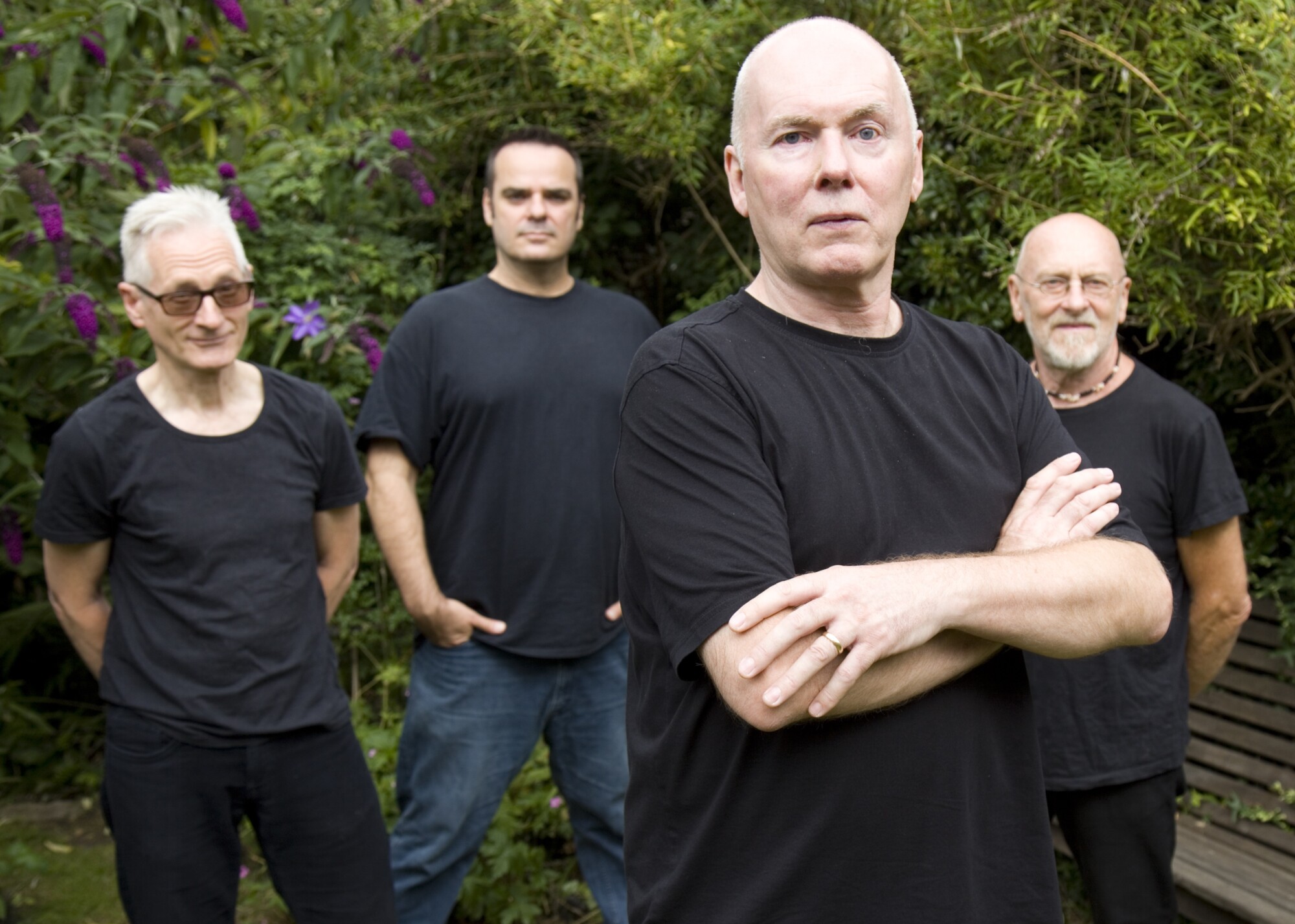
Last thoughts?
Charlie: We’d very much like to thank Colin Hill for his long-term support. He’s written magazine articles and sleeve notes, organized gigs, and released ‘Memory Or Dream’ on his own label. He introduced us to you, Klemen, and you gave us this incentive to rummage through our memories, which we’ve found fascinating. Also, special thanks to Nigel Cross – he wrote magazine articles and sleeve notes, organized gigs, and also released the ‘Time’/’Monkeys & Degenerates’ and ‘Space Is The Place’ singles. And not forgetting the late great Martin Griffin who gave us free recording time at his studio in the 70s and organized gigs for us in London (and went on to play with Hawkwind). Well, of course, there are countless others who helped us so thanks to them too!
Klemen Breznikar
Headline photo: The Brainiac 5
The Brainiac 5 Website / Facebook / Bandcamp
High on the Pygtrack Facebook
DATES PERSONNEL RECORDINGS
B5 (1) 1976-1978 | Charlie Taylor: Vocals, Guitar, Bert Biscoe: Vocals, Guitar, Woody: Bass, Steve Hudson: Drums, Vocals | ‘Double Booked’ LP – 2 tracks – Marilyn Monroe & Natty Punko, ‘Mushy Doubt’ EP, ‘Time’/’Monkeys & Degenerates’ single (With Bert & Richard Booth)
B5 (2) 1978-1981 | Charlie Taylor: Vocals, Guitar, Richard Booth: Vocals, Guitar, Woody: Bass, Steve Hudson: Drums, Vocals | ‘Working’/ ‘Feel’ – single Woronzoid 12” Compilation and the ‘World Inside’ LP
B5 (3) 2012-2013 | Charlie Taylor: Vocals, Guitar, Duncan Kerr: Guitar, Vocals, Woody: Bass, Steve Hudson: Drums, Vocals |’Space Is The Place’ 10” vinyl
B5 (4) 2013-2015 | Charlie Taylor: Vocals, Guitar, Duncan Kerr: Guitar, Vocals, Nick Onley: Vocals, Sax, Flute, Guitar, Woody: Bass, Wayne Worrell: Drums, Vocals | ‘Exploding Universe’ CD
B5 (5) 2015-2017 | Charlie Taylor: Vocals, Guitar, Duncan Kerr: Guitar, Vocals, Woody: Bass, Harmonica, Kalimba, Jews Harp, Joe Malone: Drums, Vocals | ‘Journey To X’ 12” & CD & ‘We’re Ready’ CD (With Bert Biscoe on 1 track)
B5 (6A) 2017-2021 | Charlie Taylor: Vocals, Guitar, Duncan Kerr: Guitar, Vocals, Wayne Worrell: Bass, Vocals (One track), Joe Malone: Drums, Vocals | Live Gigs + ‘Back to Shore’ CD-Two tracks & ‘Another Time Another Dimension’ CD, 1 track
B5 (6B) 2017-2022 | Charlie Taylor: Vocals, Guitar, Keyboards, Drums, Duncan Kerr: Guitar, Vocals, Woody: Bass, Harmonica, Kalimba, Jews Harp | With guests: Bert Biscoe, Chrissie Quayle, Oli Ariotto, Dave Brooks, Oxman, Richard Booth, Russell Roberts, Lucy Yuill, Angela Taylor, Joe Malone, Wayne Worrell | ‘Back To Shore’ CD & ‘Another Time Another Dimension’ CD 1 track
B5 (7) 2021 | Charlie Taylor: Vocals, Guitar, Keyboards, Drums, Duncan Kerr: Guitar, Bert Biscoe: Vocals, Guitar, Woody: Bass, Harmonica, Kalimba, Jews Harp Chrissy Quayle: Vocals, Sax | ‘Another Time Another Dimension’ CD
B5 (8) 2022-2023 | Charlie Taylor: Vocals, Guitar, Drums Bert Biscoe: Vocals, Guitar Duncan Kerr: Guitar Woody: Bass, Harmonica, Kalimba, Jews Harp, Bamboo Flute, Bass Recorder | ‘Memory Or Dream’ 12” Vinyl & Download
Brainiac 5 | Interview

